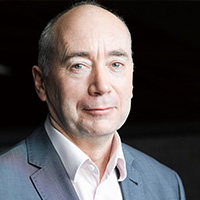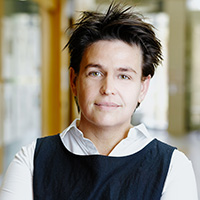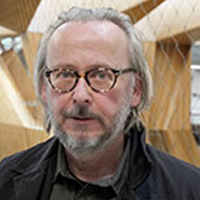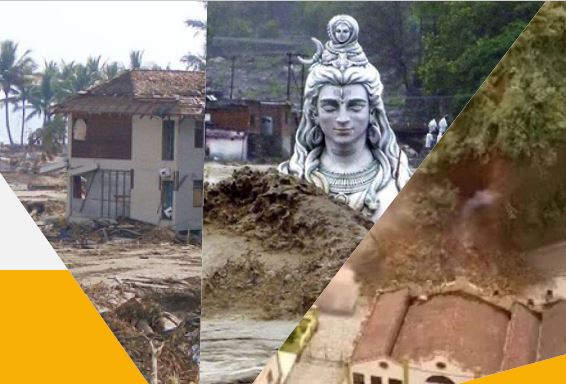ACAHUCH
The Australian Centre for Architectural History, Urban and Cultural Heritage provides an international perspective on research and teaching in architectural history and heritage with a particular emphasis on Australia and the Asia-Pacific.
News and Events
Co-directors
Centre Coordinator
Academic staff

Mr Felix McNamara
Dr Bronwyn Stocks
Advisory board

Roger Beeston

Sheridan Burke
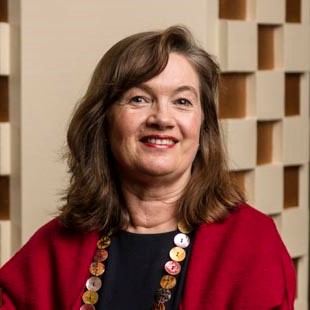
Ann Carew

Dr Julie Collins

Dr Jane Eckett

Helen Lardner

Deborah Tout-Smith

Ian Travers

Felicity Watson

Samantha Westbrooke

Suzanne Zahra
Graduate researchers

Domenic Trimboli
Architecture, Urban Culture and Design, Urban Design, Urban Planning
Upcoming Events
2025 News
2024 News
2023 News
2022 News
Earlier News
Past events
-
Tuesday 6pm - 7:30pmLECTURE: Tomasz Tomaszek (Rzeszów) : Polish Wooden Vernacular Architecture
 Lecture
Lecture -
Thursday 10am - 5pmCONFERENCE: Save the Date 2024 Everyday Heritage and Difficult Legacies Symposium (Western Australia)
 Event
Event -
Thursday 6:30pm - 8pmBOOK LAUNCH: Amanda Achmadi launches Andra Matin at RBF
 Event
Event -
Wednesday 6pm - 7pmTALK: Katti Williams, Philip Goad and Peter Maddison - Alternate visions for Victoria's war memorial
 Event
Event -
Wednesday 5pm - 6pmBOOK LAUNCH: Architectural Encounters in Asia Pacific
 Event
Event -
Wednesday 9am - 5pmSYMPOSIUM: ACAHUCH presents Keeping House
 Event
Event -
Monday 6:30pm - 7:45pmLECTURE: Miles Lewis Oration 2024 - Khoo Salma Nasution (Penang, Malaysia)
 Event
Event -
Thursday 6pm - 7:30pmTALK: ACAHUCH Co-Director Julie Willis presents The Trouble with Hardy Wilson at U.Syd
 Event
Event -
Thursday 10am - 6pmINTERNATIONAL: Dr Stuart King speaks with Tania Sengupta at RIBA's "Decolonising Architecture Symposium: Reimagining Spaces and Histories"
 Event
Event -
EXHIBITION: John Andrews Architect of Uncommon Sense
 Event
Event -
Monday 6:30pm - 8pmLECTURE: Open House Melbourne Heritage Address: John Gollings
 Event
Event -
LECTURE: Modern Melbourne Premiere: Maggie Edmond
 Event
Event -
Sunday 11:40am - 4pmTALK: ACAHUCH members discuss alternative visions for Victoria's War Memorial
 Event
Event -
Friday 6:30pm - 8:30pmTALK and LAUNCH: Noritaka Minami on John Andrews
 Event
Event -
EXHIBITION: Lens + Form: Richard Tandler and Liz Woolf
 Event
Event -
Wednesday 5:30pm - 6:30pmLECTURE: Miles Lewis discusses Portable Buildings : Port Adelaide to Darwin at UniSA
 Event
Event -
CONFERENCE: RIBA presents Displaced Lives: Architects seeking refuge on the brink of the Second World War
 Event
Event -
Friday 1pm - 5pmBOOK LAUNCH: Domesticity Under SiegeEvent
-
EXHIBITION: South Space and Species of Suburban Spaces
 Event
Event -
Tuesday 6:30pm - 8:30pmTALK: Ernö Goldfinger - Famous But Forgotten (Isokon Gallery, London)
 Event
Event -
Wednesday 6pm - 7:30pmBOOK LAUNCH: The Architecture of Iwan Iwanoff by Warren Andersen
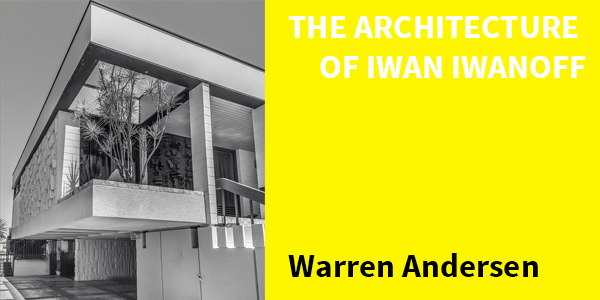 Event
Event -
Monday
CfP : ICAM22 - Stories, Innovation, Strategy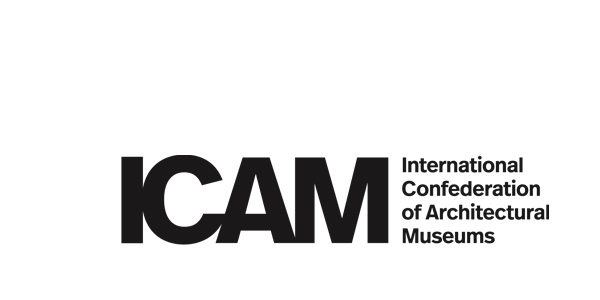 Event
Event -
Monday
CfP : RIBA Hybrid conference: Architects Seeking Refuge on the Brink of WWII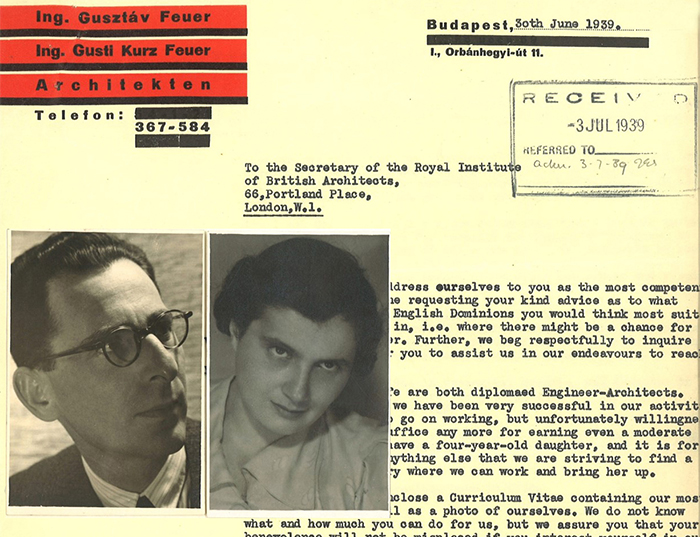 Event
Event -
Thursday 6:30pm - 8pmTALK: Design Matters: Adapt at Robin Boyd Foundation
 Event
Event -
Wednesday 6:30pm - 8pmTALK: Paul Walker x DOCOMOMO on John Andrews Exhibition, U.Sydney
 Event
Event -
Tuesday 6:30pm - 8pmTania Sengupta (Bartlett, UCL) presents State Space and Lived Lives in the Colonial Margins, 19th C. Eastern India
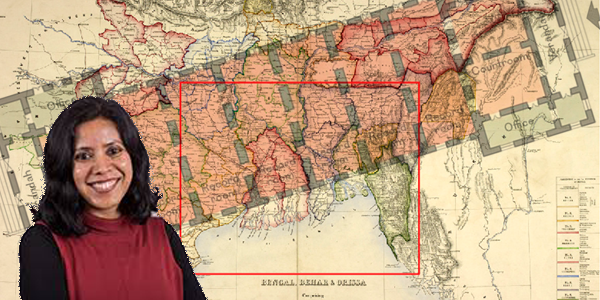 Lecture
Lecture -
EXHIBITION: When Robin Boyd went to Japan
 Event
Event -
Friday 5:15pm - 7pmFILMS: Murray Grigor on Mackintosh, Gwathmey Siegel and St Peter Seminary
 Films
Films -
Thursday 1:15pm - 2:45pmLECTURE: Sybille Frank on How to circumvent a complex history: International enterprises as heritage-makers at New Potsdamer Platz, Berlin
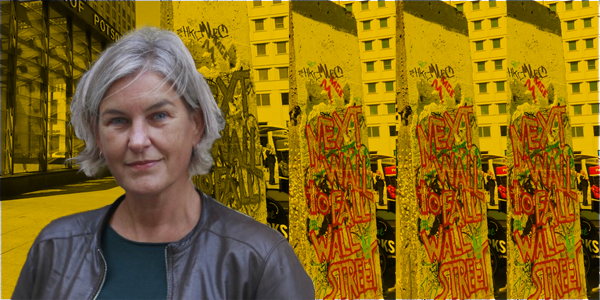 Lecture
Lecture -
Sunday 1pm - 2pmTALK: Philip Goad: Japan through Boyd’s camera lens
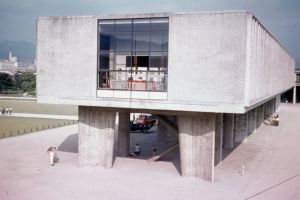 Event
Event -
Wednesday 10am - 11amTALK: Anoma Pieris on the Architecture of Confinement
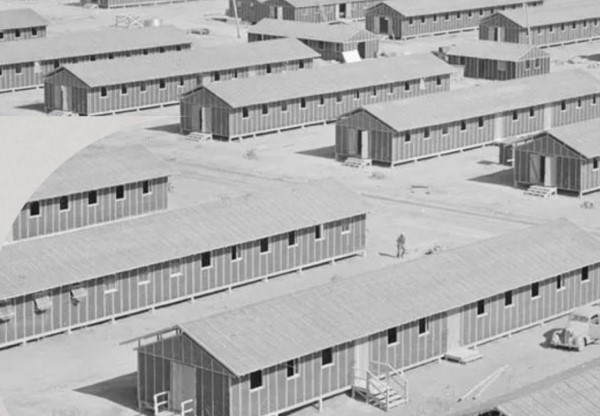 Event
Event -
LECTURE SERIES: Critical and Curatorial Practices in Design (SM2_23)
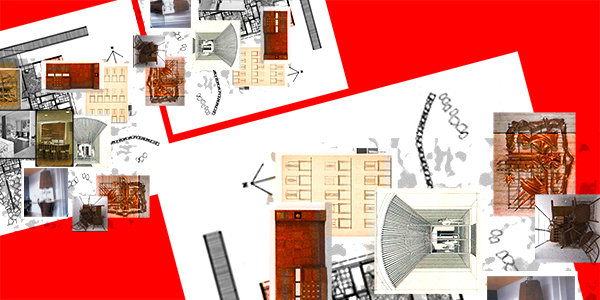 Event
Event -
Friday 11am - 5:30pmSYMPOSIUM: ACAHUCH presents Prefab and Precut (1945-1975)
 Event
Event -
Wednesday 6:30pm - 8pmLECTURE: Miles Lewis Oration 2023 - Dr Rosemary Hill (U.Oxford)
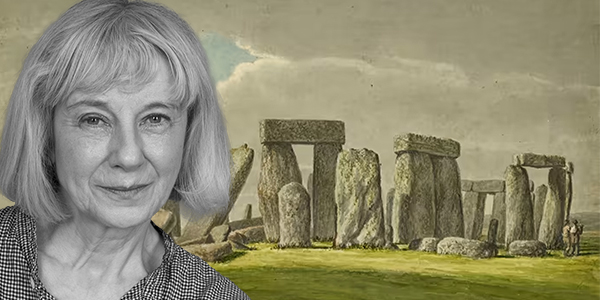 Event
Event -
Friday 12pm - 1:30pmPANEL : ACAHUCH + AIA 2023 Awards for ‘Heritage’ Discussion Panel
 Event
Event -
Tuesday 6:30pm - 8pmBOOK LAUNCH: Alberto Pugnale and Alberto Bologna launch book on Dante Bini at CO.AS.IT
 Event
Event -
Tuesday 5:15pm - 8pmBOOK LAUNCH: 'Campus' and 'An Unfinished Masterpiece'
 Event
Event -
Monday 11am - 12pmLECTURE: Prof Shao Yong (Tongji) on Living Heritage and Urban-Rural Revitalization in China
 Event
Event -
EXHIBITION: Well Built: the work of Simmie and Co, hosted by RHSV
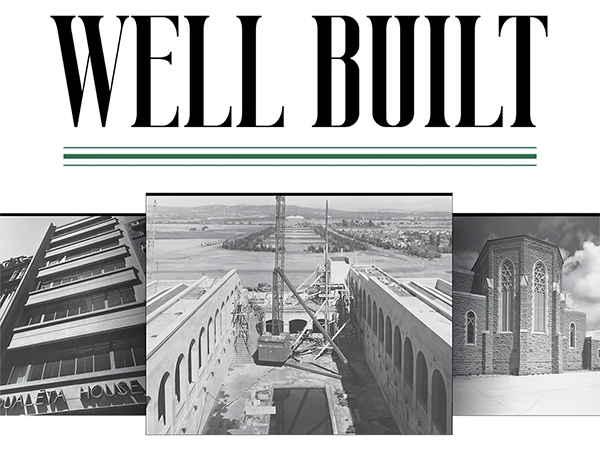 Event
Event -
Tuesday 5:30pm - 7:30pmTALK: DOCOMOMO presents Caledonian Modern, Cambodian Modern, Ian Mckay, Dispatches From The Valencia Conference
 Event
Event -
Wednesday 12pm - 1:30pmPANEL: ACAHUCH x National Trust Heritage Festival presents Jorge Otero-Pailos (CU) on 'Historic Preservation Theory'
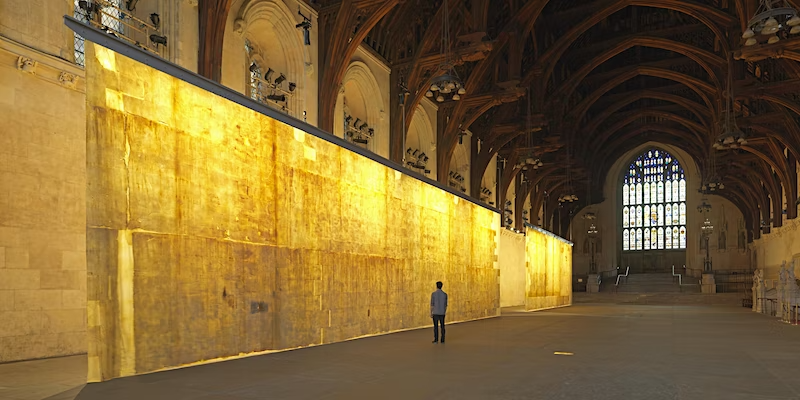 Event
Event -
SYMPOSIUM: Yale Centre for Brish Art presents Isokon Ltd
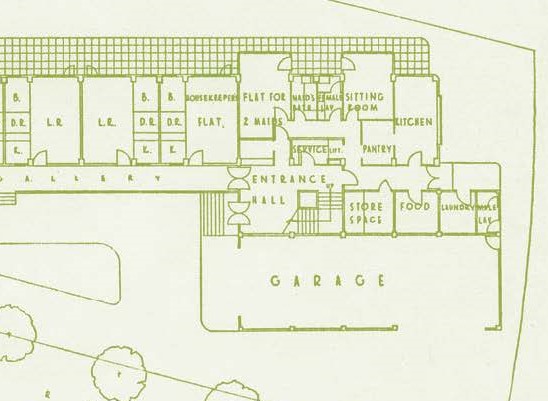 Event
Event -
EXHIBITION: New Horizons : Through Darkness comes Light
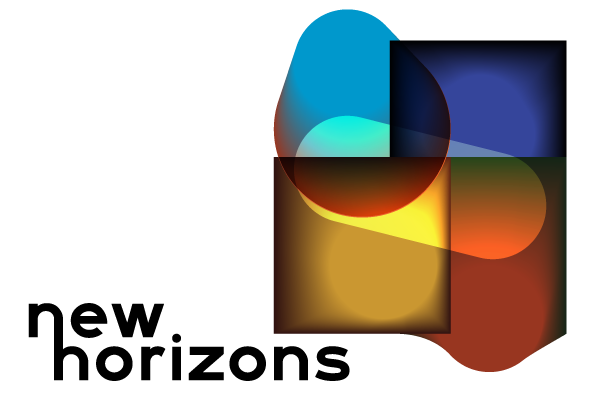 Event
Event -
Wednesday 12:30pm - 2pmSEMINAR: ACAHUCH x AURECON x Peter Cox - Improving Energy Efficiency and Heritage Building Resilience
 Event
Event -
Tuesday 7:30pm - 9pmPANEL: Edquist, Goad and Pert on Post-War Emigres and the Interior in Victoria
 Event
Event -
Wednesday 6pm - 8pmPANEL: ACAHUCH x ICOMOS GA 2023 x Lovell Chen : Heritage Changes - or does it?
 Event
Event -
Tuesday 12pm - 1pmFLOOR TALK: Warren Andersen on The Studio of Iwanoff
 Event
Event -
Thursday 6pm - 8pmEXHIBITION LAUNCH: New Horizons : Through Darkness comes Light
 Event
Event -
EXHIBITION: Immigrant Networks at CO-AS-IT
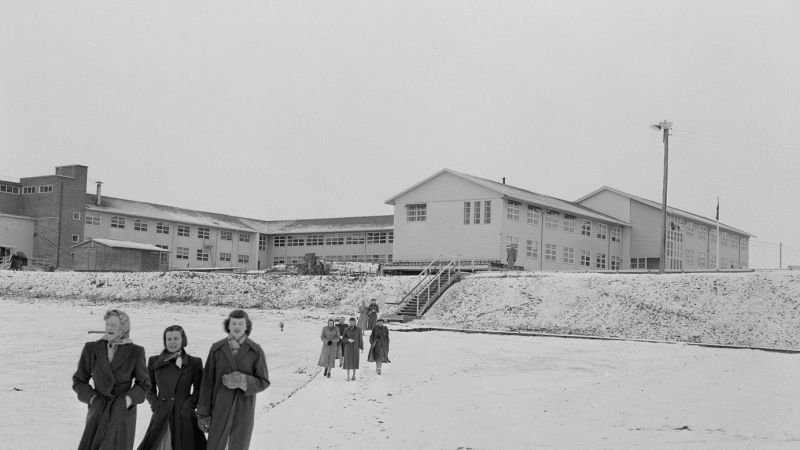 Event
Event -
Thursday 7am - 8pmTALK: DOCOMOMO Australia presens John Allan's new book 'Revaluing Modern Architecture: Changing Conservation Culture'
 Event
Event -
Thursday 1:30am - 2:30amLECTURE: Macarena de la Vega de Leon discusses 'The Historiography of Global in Architecture' at IUdL
 Event
Event -
CONFERENCE:'Glass: Vision, Reflection, Imagination'
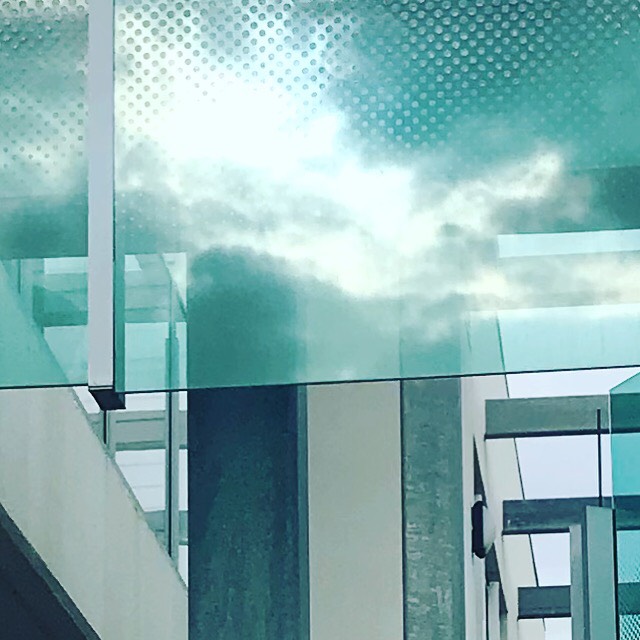 Event
Event -
Friday 9am - 5pmACAHUCH Symposium : Parklife 2022
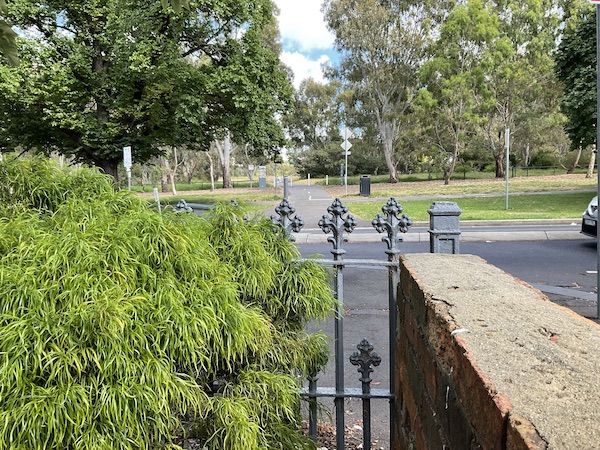 Event
Event -
CONFERENCE: CAVA presents Spatio-temporal Tales: Design Pedagogies of Digital Narrative Practices
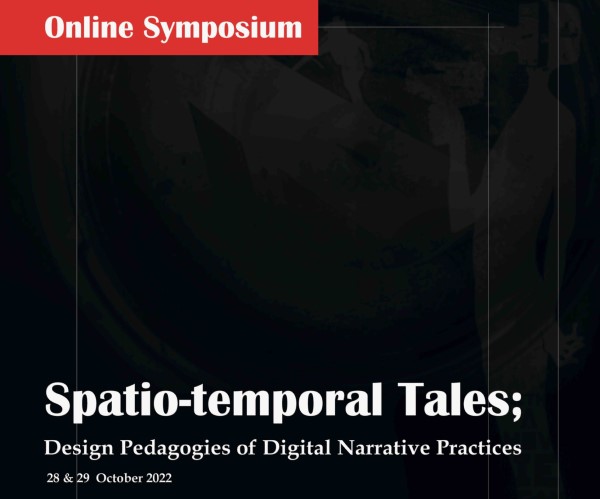 Event
Event -
SYMPOSIUM: Dumbarton Oaks presents 'Changing Climates - Changing histories: Perspectives from the Humanities'
 Event
Event -
Friday 2pm - 5pmTALK: SAHGB presents Afghanistan: Architectural Heritage and Global Politics
 Event
Event -
Friday 4am - 11amCONFERENCE: SACRPH present their 19th National Conference on Planning History
 Event
Event -
Thursday 5:30pm - 7:30pmTALK: Engineering Heritage Victoria and the RHSV - Dr Giorgio Marfella presents 'Seeds of Concrete Progress'
 Event
Event -
Wednesday 12:30pm - 1:30pmTALK: MSD x ACAHUCH presents Jorge Otero-Pailos (CU) on 'The Ethics of Dust'
 Event
Event -
Thursday 7:15pm - 8:45pmTALK: ACAHUCH + CCPD: Langlands & Bell - Ideas of Utopia
 Event
Event -
Wednesday 12:30pm - 2pmPANEL : ACAHUCH + AIA 2022 Awards for ‘Heritage’ Discussion Panel
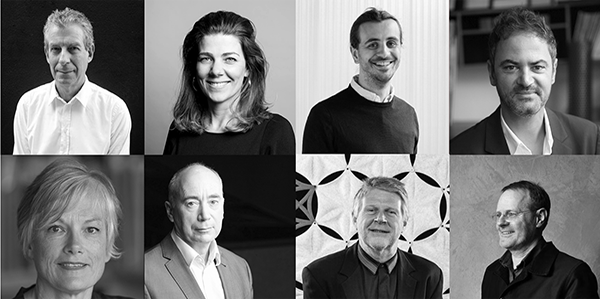 Event
Event -
EXHIBITION: RBF presents Bill Lucas: Architect Utopian
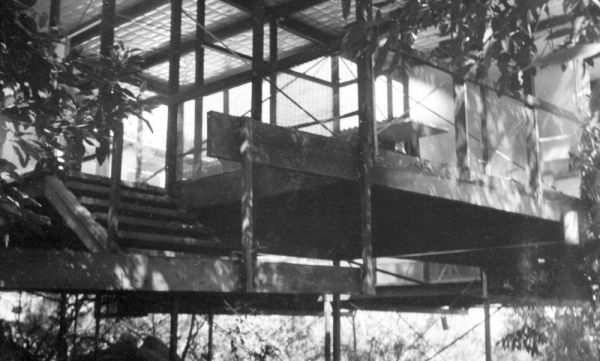 Event
Event -
Thursday 6pm - 7:30pmLAUNCH: Locating Giurgola - a new ARC project with ACAHUCH members
 Event
Event -
Wednesday 6:30pm - 8:30pmTALK: RBF presents A New History of the Australian Heritage Movement: In Conversation
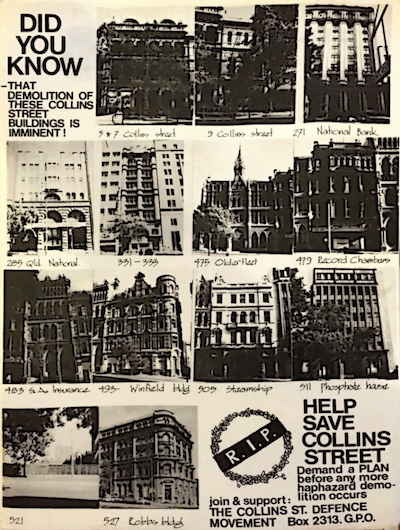 Event
Event -
Friday 10am - 11amPUBLIC LECTURE: MSD presents 'When Lines Became Objects' with Jordan Kauffman
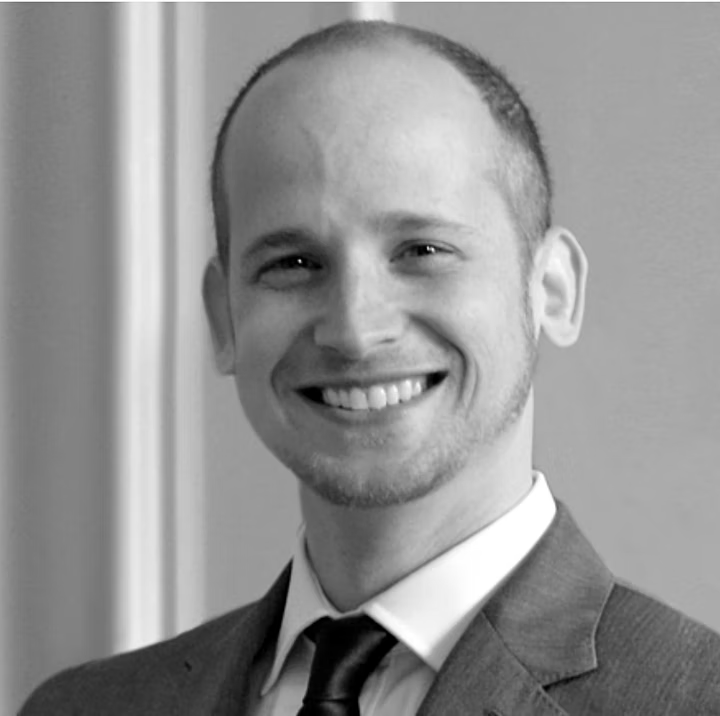 Event
Event -
Thursday 6pm - 7:30pmWEBINAR: Polish Aid to Ukrainian Museums & National Heritage amid Russia's Invasion
 Event
Event -
Wednesday 6pm - 8pmTALK : Women, Writing, Design – Art & Design Salon
 Event
Event -
Sunday 10:30am - 3:30pmSYMPOSIUM: Robin Boyd Foundation - Design Matters on Campus
 Event
Event -
Thursday 5:30pm - 7pmBOOK LAUNCH : Exhibitions, Music and the British Empire - Sarah Kirby
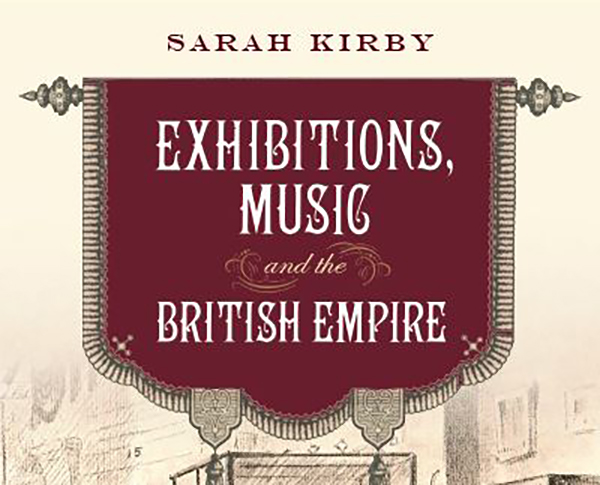 Event
Event -
Thursday 5:30pm - 7pmTALK : Royal Heritage Society of Victoria presents 'The Rise and Fall of the Iron Bridge' by Miles Lewis
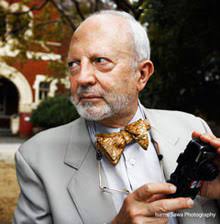 Event
Event -
Thursday 2pm - 2pmLaunch: Public Records Office of Victoria launches 'Queer Stories from the Archives'
 Launch
Launch -
Friday 6pm - 9pmExhibition: RETAIN REPAIR REINVEST Ascot Vale Estate
 Event
Event -
Thursday 6:30pm - 7:45pmInaugural Miles Lewis Oration 2022 - Prof Alex Bremner (U.Edinburgh)
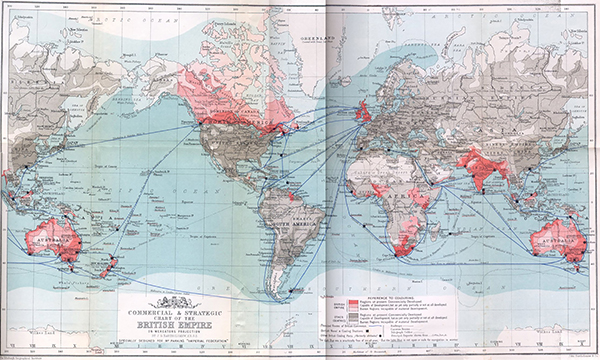 Event
Event -
Wednesday 9am - 12:30pmSYMPOSIUM : Australasia and the Global Turn in Architectural History
 Symposium
Symposium -
Tuesday 12pm - 1:15pmACAHUCH International : Eva Branscome (UCL) on Hans Hollein's 1968 Milan Triennale Exhibition
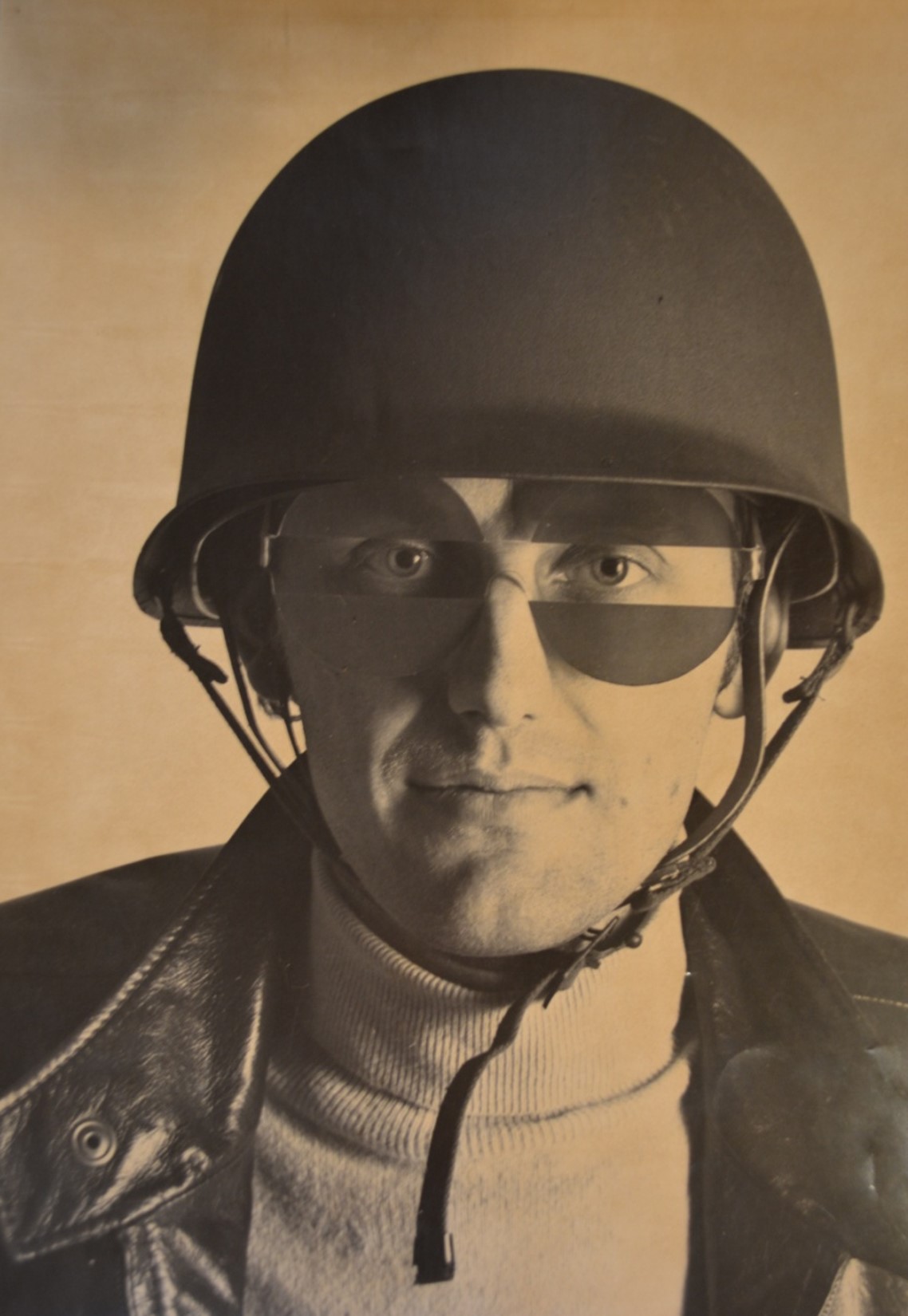 Lecture
Lecture -
WEBINAR: ICOMOS Cultural Heritage in the challenge of Climate ChangeEvent
-
Monday 6pm - 7:15pmMurray Fraser (Bartlett, UCL) presents A World of Architectural History
 Lecture
Lecture -
Wednesday 12:30pm - 1:15pmACAHUCH MicroCerts: Join our Information Sessions
 Event
Event -
Tuesday
CfP : Intangible Heritage - University of Kent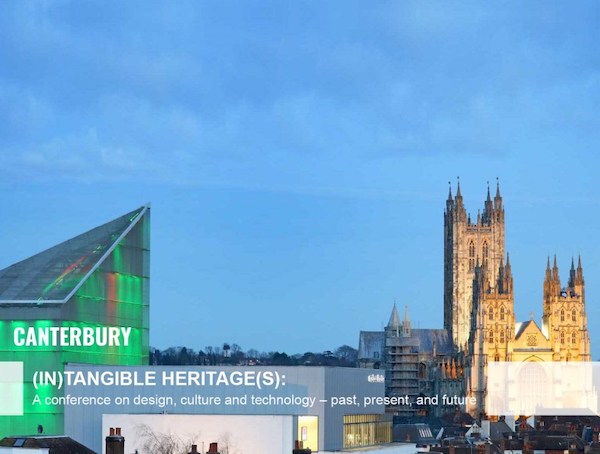 Event
Event -
ACAHUCH Symposium 2021: Navigating Encounters and Exchanges
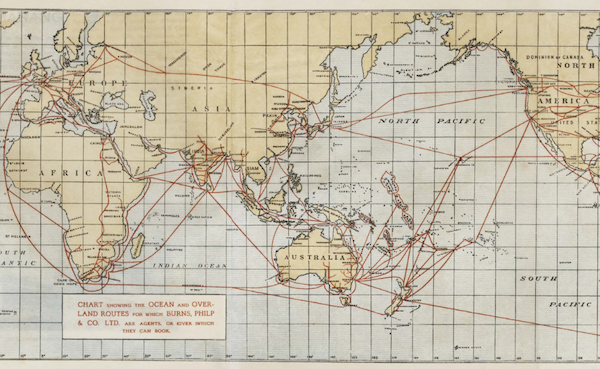 Symposium
Symposium -
Wednesday 6:30pm - 8pmKEYNOTE : ACAHUCH Symposium 2021: Adrian Vickers and Julia Martinez
 Symposium
Symposium -
Saturday 2pm - 5pmSYMPOSIUM : Australia ICOMOS: Heritage Pathways 2021
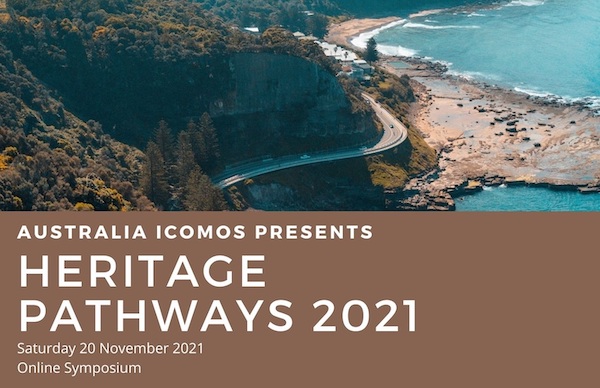 Event
Event -
Friday 12:30pm - 1:30pmParlour LAB 11: Rethinking Heritage, with Amanda Achmadi and Kelly Greenop + Chris Landorf
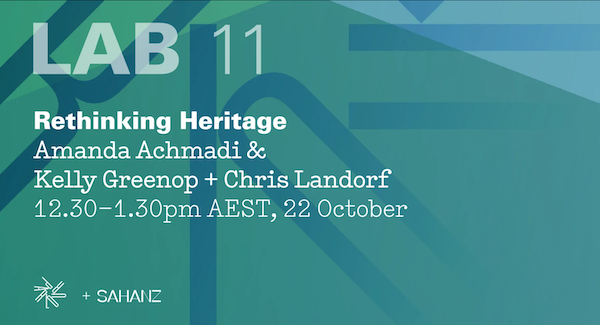 Event
Event -
Wednesday 12:30pm - 2pmEvent : ACAHUCH + AIA 2021 Awards for ‘Heritage’ Discussion Panel
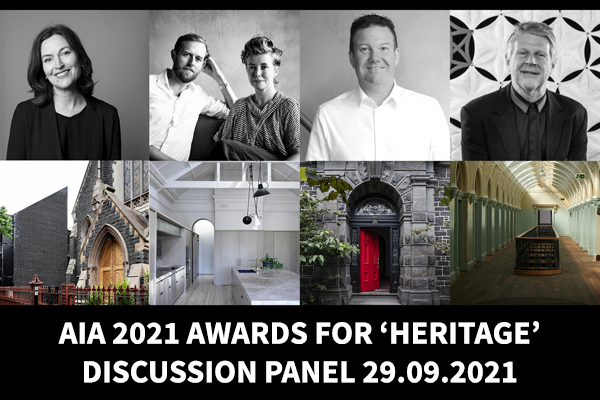 Event
Event -
Wednesday 6pm - 7:30pmEvent: The Australian Dark Sky Alliance presents The Cultural Value of the Night Sky
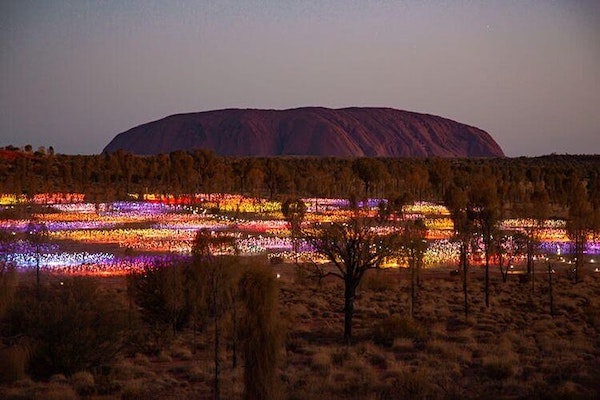 Event
Event -
Saturday 9:15am - 5:30pmAutomotive Historians Australia hosts 5th Annual Conference on 'The Future of Automotive Collections & Archives in Australia'
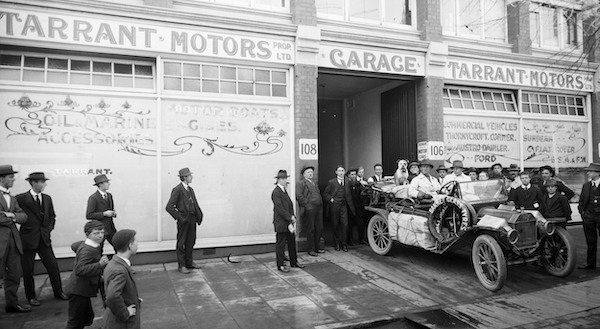 Event
Event -
Tuesday 8pm - 9:15pmCCPD x ACAHUCH : Miles Glendenning, U. Edinburgh, on Mass Housing
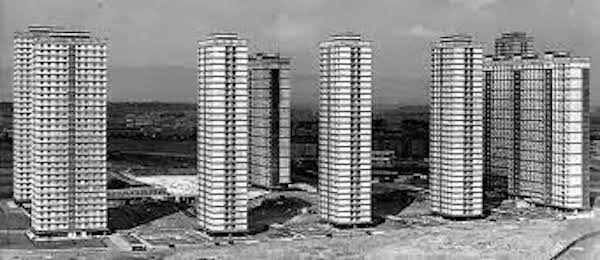 Event
Event -
Saturday 6am - 7:30amAuthors on Architecture: Growing up Modern presented by SAH Southern Californian Chapter
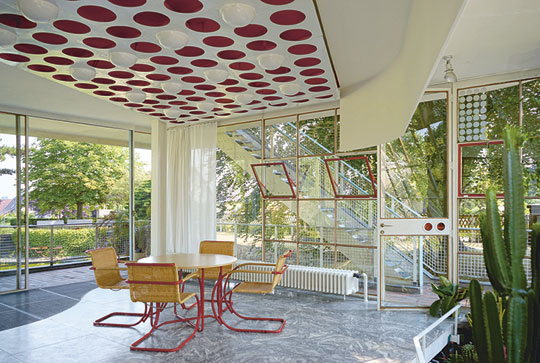 Event
Event -
Thursday 5:30pm - 7pmPortable Buildings in Australia with Miles Lewis, presented by the Royal Historical Society of Victoria
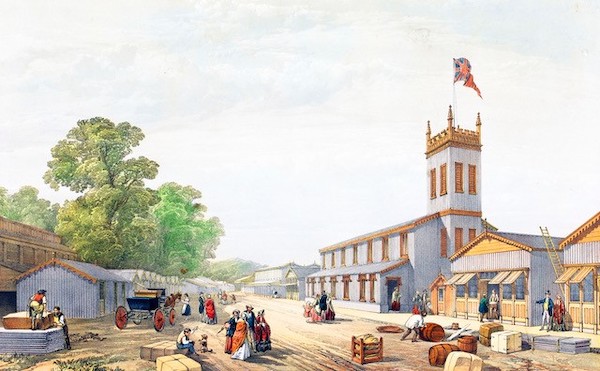 Event
Event -
Tuesday 1pm - 1pmACAHUCH + OPEN HOUSE MELBOURNE - An exploration into the Miles Lewis Building Heritage CollectionEvent
-
Wednesday 5:30pm - 7pmDOCOMOMO Australia + ACAHUCH : Heritage and activism in Modern sites and neighbourhoods
 Event
Event -
Wednesday 8:30am - 10amPanel: AIA presents the Architecture in Research Forum: The Contemporary Architectural Archive and Digital Files
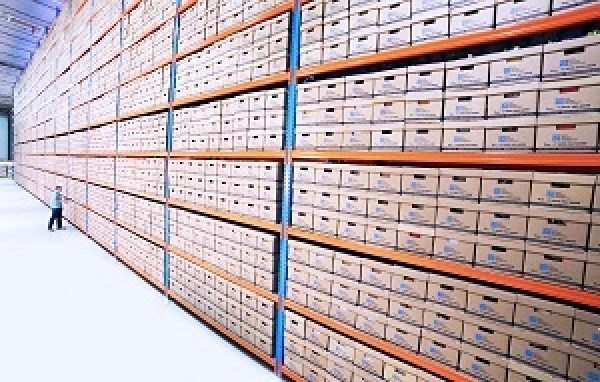 Event
Event -
Thursday 7pm - 8pmOur Heritage for the Future | PHA (Vic & Tas) and the National Trust
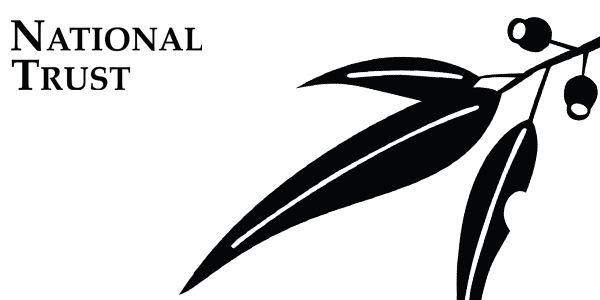 Event
Event -
EXHIBITION: Fresh Eyes by the Robin Boyd Foundation
 Exhibition
Exhibition -
Monday 6:30pm - 7:30pmLaunch: A History of LGBTIQ+ Victoria in 100 Places and Objects
 Launch
Launch -
Friday 7am - 8:15amSAH Method Acts Workshops launch 2021
 Event
Event -
Friday 12:30pm - 1:30pmMelbourne Conversations: Postwar Architecture with Hannah Lewi
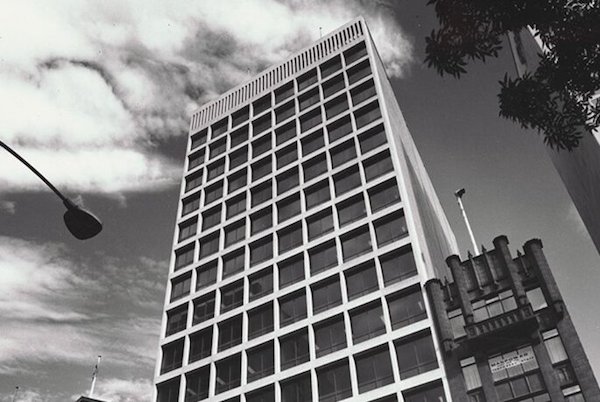 Event
Event -
Thursday 1am - 2:30amICAM launches Digital Architectural Archive Collections:Expanding Practices & Future Uses
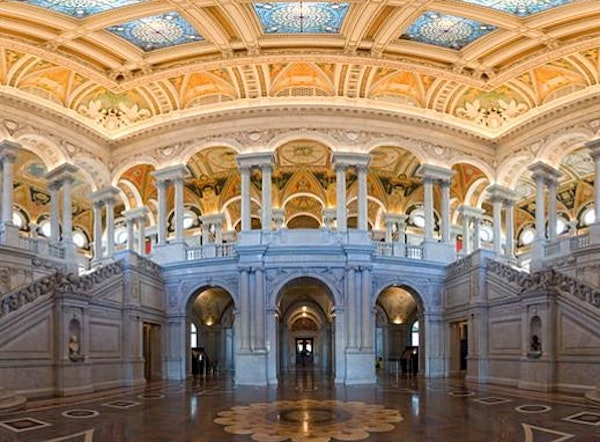 Event
Event -
Wednesday 1pm - 2pmACAHUCH + City of Melbourne presents the Hoddle Grid Heritage Review
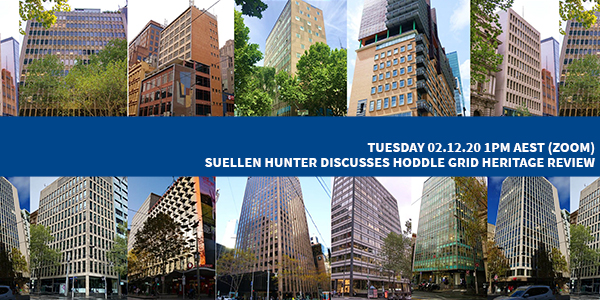 Event
Event -
Wednesday 12pm - 1pmBook Preview – Le Corbusier in the Antipodes: Art, Architecture and Urbanism
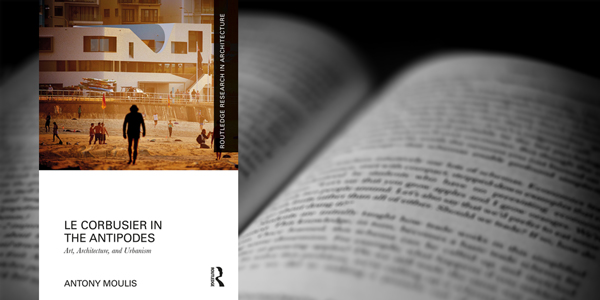 Event
Event -
Monday 7pm - 8:30pmACAHUCH International: Pippo Ciorra (MAXXI) on Aldo Rossi: Exhibitions
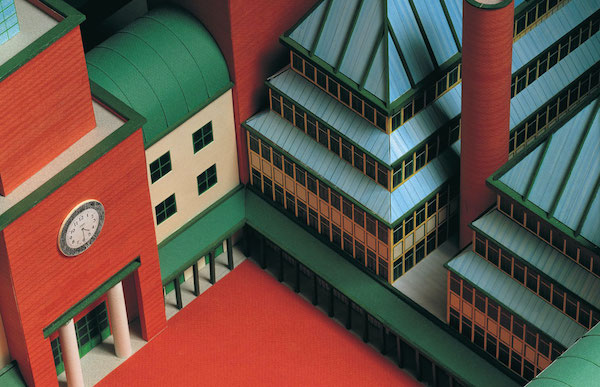 Event
Event -
Wednesday 12:30pm - 1:15pmACAHUCH Drop-In Session: Urban and Cultural Heritage MicroCerts
 Event
Event -
Tuesday 3am - 4:30amSeminar: A Very Long Journey: Architecture Between Britain and Western Australia with Andrew Murray
 Event
Event -
Monday 12pm - 1pmParlour Lab 01: Women in Architecture: Archives, Data, Visibility
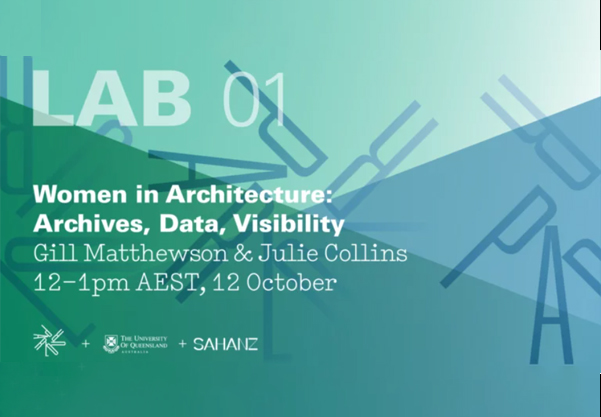 Event
Event -
2020 ICOMOS General Assembly 'Shared Culture, Shared Heritage, Shared Responsibility'
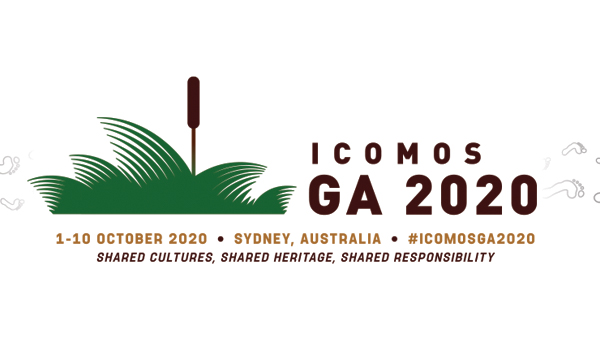 Event
Event -
Thursday 6pm - 7pmACAHUCH + CCPD: Dr Bettina Schlorhaufer and Prof Alan Pert
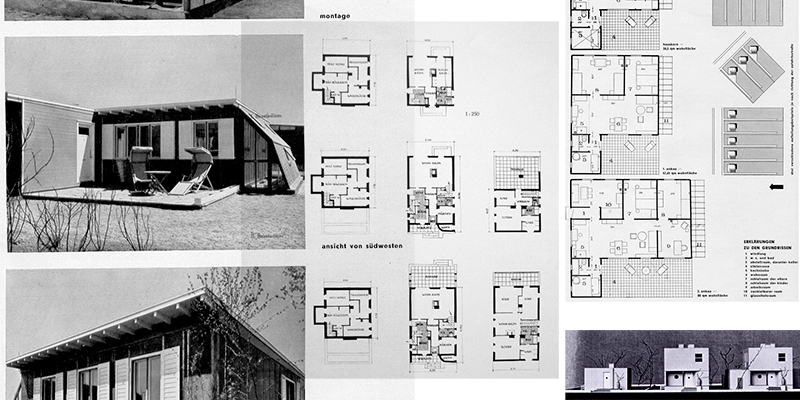 Event
Event -
Friday 6pm - 7pmACAHUCH + CCPD: Dr Albena Yaneva and Prof Alan Pert
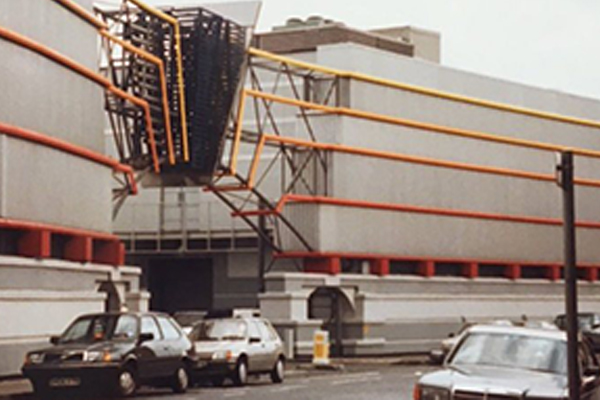 Event
Event -
Tuesday 4pm - 5:30pmPanel: Learnings from Australia's Post-War Apartment Buildings
 Event
Event -
Wednesday 1pm - 2pmIn Conversation | The Value of Place: Authentic & Local - Urbis with ACAHUCH post-doc Dr James Lesh
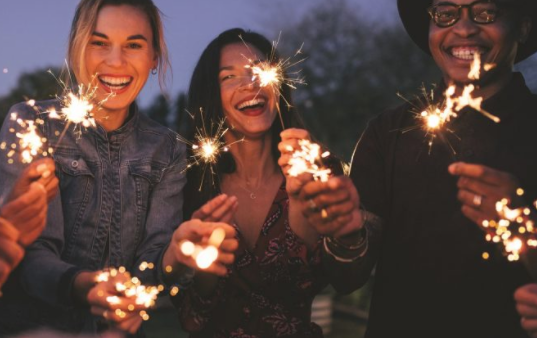 Event
Event -
Robin Boyd Foundation Virtual Open Houses launches for 2020
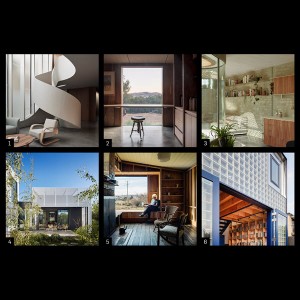 Event
Event -
Computational Design and the Future of Architecture Seminar : ITB Indonesia
 Event
Event -
Friday 8pm - 9pmCambridge University Press summer seminar series : Urban Histories with Dr James Lesh
 Event
Event -
Monday 10:30am - 5:30pmACAHUCH SAHANZ PhD Colloquium 2020
 Event
Event -
Wednesday 5:30pm - 7pmACAHUCH hosts seminar with ALGA and Heritage Victoria on Victoria's Queer Heritage
 Seminar
Seminar -
Monday 5pm - 7pmBook Launch: “New Digital Practices in GLAM and Heritage”
 Book Launch
Book Launch -
Monday 1pm - 2pmACAHUCH Symposium 2020: Keynote Lecture Martien de Vletter
 Keynote
Keynote -
Wednesday 6:30pm - 8pmTalk – Australia Modern: The Book
 Book Launch
Book Launch -
Australia Modern: from the iconic to the everyday
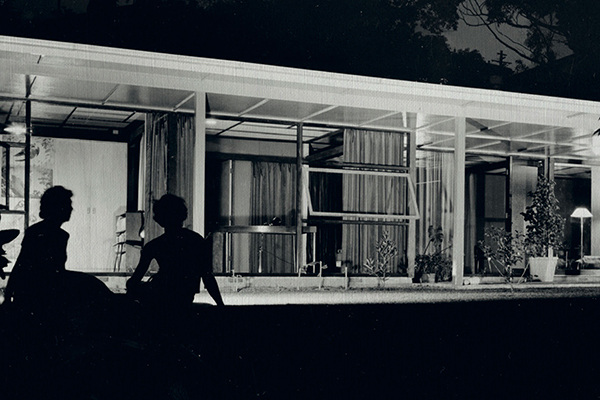 Event
Event -
Saturday 2pm - 3pmThe pervasive presence of modernism: Australia Modern floor talk
 Event
Event -
Thursday 5:45pm - 7:30pmThe Burra Charter turns 40
 Event
Event -
Thursday 4pm - 5pmModern Architecture and the Open Society: Work and Ideas of Jaap Bakema (1914-1981)
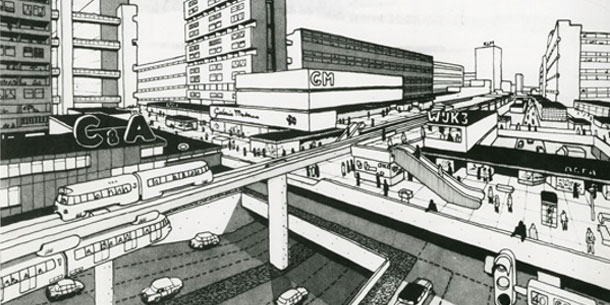 Event
Event -
Friday 3pm - 4pmCurating the Paradoxical Image in Networked Culture: Digital Programme of The Photographers' Gallery (2012-2019)
 Event
Event -
Thursday 6:30pm - 8pmBook Launch: Architecture and the Modern Hospital
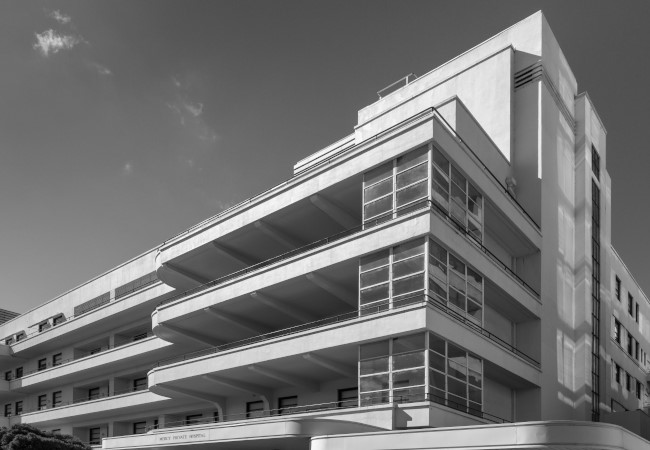 Book Launch
Book Launch -
Friday 11:45am - 7pmCampus: Building Modern Australian Universities. Practitioner Symposium 2018Event
-
Wednesday 6pm - 8pmDocomomo Victoria Slide Night and Book Launch
 Event
Event -
Tuesday 6pm - 8pmPastPort Yarra
 Event
Event -
Wednesday 1pm - 2pmRe-photography as a tool for citizen heritage
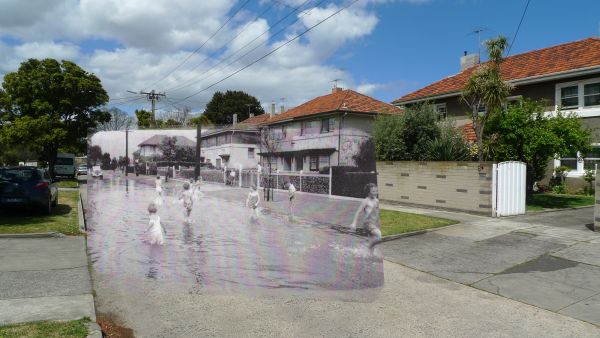 Event
Event -
Constructing Religious Territories: Community, Identity and Agency in Australia’s Modern Religious Architecture
 Event
Event -
Autopia: The Car and the Modern City
 Event
Event
Our ACAHUCH researchers are actively involved in teaching across the undergraduate and graduate programs here at the Faculty.
The Master of Urban and Cultural Heritage (MUCH) is an industry-focused, cross-disciplinary program open to graduates who are passionate about the social and cultural dimensions of the built environment in the twenty-first century.
The program focuses on heritage in a global context, with key features including the exploration of new approaches to digital technologies and heritage, issues of heritage significance as well as the social and economic impact of cultural heritage in relation to reconstruction and across the tourism industry.
Graduate profile: Amanda Valenzuela Pallamar
What was your favourite subject in the program to date and why?
I loved “Representing and Remembering place”. It was a very interesting subject that allowed me to look into the concept of “place” from so many different perspectives.
What attracted you to the Melbourne School of Design?
I wanted a Master that combined strong practical and theoretical approaches to heritage and doing research about the different Master programs the one that MSD had to offer was the most attractive one.
So far, what are the most valuable skills that you have learnt?
The most important skill the Master has given me has been to be critical, reflective and to understand the complexity of the concept of “heritage” today.

PhD supervision
Many of our researchers offer PhD supervision across a broad range of research areas. Get in touch to enquire about supervision opportunities.
Micro-credentials
ACAHUCH offers a comprehensive suite of professional development short courses in urban and cultural heritage through the Melbourne School of Professional and Continuing Education (MSPACE).
The ACAHUCH micro-credential series is designed for professionals of diverse backgrounds seeking to expand their applied skills in Urban and Cultural Heritage. Our four online short courses draw upon the world-leading research, teaching and industry expertise within the Centre.
Whether you’re looking to upskill, expand your knowledge or take the next step in your career, our innovative and engaging courses will help unlock your potential so you can thrive in a continuously evolving world.
ACAHUCH will offer our suite of micro-credentials in 2024.
Over the last five years, ACAHUCH has hosted a series of Exhbitions, showcasing a variety of materials related to urban and cultural heritage and architectural history.
-
Excavating Modernism
Exhibition materials, including archival drawings, documentation, interviews, print media, 3D models and film explore the narratives of Jewish émigré creatives in Melbourne's South-Eastern suburbs.
-
New Horizons
Exhibition materials, including archival drawings, documentation, interviews, print media, 3D models and film explore the narratives of émigré creatives who migrated to Australia in the 40s, 50s, and 60s
-
Species of Suburban Spaces
Continuing an ongoing survey into the Australia's suburban development, this exhibition highlights different typologies, approaches and architecture as part of Melbourne Design Week 2024 programming.
-
Echo of a Fallen Tree: Graeme Gunn AM
-
Off Form Off Modern
Over the last five years, ACAHUCH has hosted a series of Symposia, drawing a diverse selection of international and national speakers, keynotes, participants and audiences.
-
DigitalGLAM Symposium
-
Haunting Memory and Place: 2017 ACAHUCH Symposium
-
Dubious Heritage: Re-thinking the modern, industrial and the everyday
- Symposium
-
Navigating Encounters and Exchanges: Intercolonial trade, industry and labour mobility in Asia Pacific, 1800s – 1950s
-
Parklife: Heritage and Place in Parkville
-
Prefab and Precut: Affordable Housing Options in Post-War Australia 1945-1975
-
Keeping House: conserving, managing and interpreting house museums
ACAHUCH fosters important research in architectural, planning, cultural and urban history and heritage conservation. It also contributes to and produces a range of research publications.
-
Citizen Heritage: Digital and Community-based Histories of Place
This project explores new digital technologies to enhance the visibility of lesser-known precincts of urban heritage.
-
Designing Australian Schools: A Spatial History of Innovation, Pedagogy and Social Change
Designing Australia’s Schools is an historical, cross disciplinary study of innovations in the design of Australian primary and secondary schools across the twentieth century.
-
John Andrews: Architect of Uncommon Sense
John Andrews: Architect of Uncommon Sense features essays from Paul Walker, Mary Lou Lobsinger, Peter Scriver and Antony Moulis, ACAHUCH Co-Director Philip Goad, and Paolo Scrivano, along with nearly 100 new photographs from visual artist Noritaka Minami of existing buildings designed by Andrews in North America and Australia.
-
Encyclopedia of Australian Architecture
The first comprehensive reference text to be published on Australian architecture. Unique in its breadth and depth, and revealing new knowledge on architects, their buildings and the ways they designed and built them.
-
Bauhaus Diaspora and Beyond Transforming Education Through Art, Design and Architecture
Fifteen thematic essays and twenty individual case studies bring to light a tremendous amount of new archival material in order to show how these innovative educators, exiled from Nazism, introduced Bauhaus ideas and models to a new world.
-
Making Landscape Architecture in Australia
This book on the history of landscape architecture in Australia, the first of its kind, profiles the people who have shaped the nation's landscape.
-
Migration Cultural Diversity and Television
This project documents the evolving history of popular television and its contribution to national discussions about migration, cultural diversity and citizenship across six decades. Now hosted at UTAS.
-
The Routledge International Handbook of New Digital Practices in Galleries, Libraries, Archives, Museums and Heritage Sites
The Routledge International Handbook of New Digital Practices in Galleries, Libraries, Archives, Museums and Heritage Sites presents a fascinating picture of the ways in which today's cultural institutions are undergoing a transformation through innovative applications of digital technology.
-
Australia Modern Architecture, Landscape & Design 1925–1975
The essential text on Australian modernism, featuring 100 significant site examples by Australia’s most revered architects, rich archival imagery and expert essays exploring how modernism has shaped Australian society.
-
Animating the Archive
The aim of this project is one of outreach to and engagement with cultural organisations to probe the future of innovative uptake of mobile and media technology.
-
Architecture and Industry: The migrant contribution to nation-building
Linking immigrant social histories to industrialisation through an explicitly spatial analysis, this project explores the post-war architectural, rural and industrial landscapes of Australia as shaped by the labour of displaced persons.
-
Bauhaus Australia
Bauhaus Australia: Émigrés, Refugees and the Modernist Transformation of Education in Art, Architecture, and Design, 1930 to 1970
-
Campus: Building Modern Australian Universities
The commitment to the environmental quality of university campuses is central to the modern contemporary tertiary experience and represents a growing multi-million dollar public investment in higher education infrastructure.
-
Architecture and the Modern Hospital Nosokomeion to Hygeia
This book explores the rapid evolution of hospital design in the twentieth century, analysing the ways in which architects and other specialists reimagined the modern hospital. It examines how the vast expansion of medical institutions over the course of the century was enabled by new approaches to architectural design and it highlights the emerging political conviction that physical health would become the cornerstone of human welfare.
-
Rethinking Modern Asia-Pacific Architectures: New Aesthetic Pedagogies International Workshop
A forum for critical reflection on the histories, pedagogies and practices of architecture in the Asia-Pacific.
-
People-Centred Methodologies for Heritage Conservation Exploring Emotional Attachments to Historic Urban Places
This book presents methodological approaches that can help explore the ways in which people develop emotional attachments to historic urban places.
-
Robin Boyd: Late Works
Robin Boyd: Late Works unveils the urban and public architectural projects designed by Robin Boyd, one of Australia’s most iconic mid-century modernists, in the final decade before his untimely death in 1971.
-
ADAPT: empowering adaptive reuse in historic precincts
The project will showcase design and practice-based approaches to the sustainable, adaptive reuse of historic places in Australia. Building on our research, interviews will be conducted with leading Australian architects and heritage practitioners.
-
Locating Giurgola: From Philadelphia School to Global Practice
This research focuses on the life and work of Italo-American architect Romaldo Giurgola, situating his work in its architectural, historical and biographical contexts across the second half of the twentieth century.
ACAHUCH also aims to engage with academics, practitioners and researchers from across the world. Starting in 2020, ACAHUCH began partnering with Critical and Curatorial Practices in Design, a research subject at the Melbourne School of Design, headed by Professor Alan Pert and Professor Philip Goad on a series of lectures and seminars during the COVID-19 Pandemic to foster further international partnerships.
Recent Publications
-
Archipelagic Views: Vernacular Transformation and Inter-colonial Agricultural Trade Networks in the Late 19th Century Asia Pacific
Amanda Achmadi, Karen Burns, Paul Walker, 2023 | Book Chapter in Paul Memmott, John Ting, Tim O’Rourke, & Marcel Vellinga, eds, Design and the Vernacular: Interpretations for Contemporary Practice and Theory, London: Bloomsbury, 2023.
-
Back to the Past: future challenges for better, safer, building design and construction
Giorgio Marfella & Jeanette Barbaro, 2019 | This article looks at the evolution of the built environment in Melbourne, and considers the origins and appropriateness of the current system of building regulation in Australia
-
From exigency to civic pride: the development of early Australian hospitals
Julie Willis, 2021 | This chapter examines the establishment and development of colonial hospitals in the Australian colonies from 1788 to 1850. It focuses on the conundrum that, while these hospitals were evidently valued highly in these settlements, they suffered from manifestly inadequate provisioning, as if the availability of a hospital was more important than its capacity to function.
-
The theoretical inapplicability of regionalism to analysing architectural aspects of Islamic shrines in Iran in the last two centuries
Faramarz Pour Hassan, Miles Lewis, Qinghua Guo, 2013 | This study examines the ways in which Western Orientalism, even in regionalist language, has failed to present a comprehensive image in analysing architectural works in developing countries, like Iran, in which internationalism did not change every aspect of architectural forms.
-
Southeast Asia, Australia and the Pacific, 1780-1914
Paul Walker & Amanda Achmadi, 2019 | Examining the architecture of Southeast Asia, Australia and the Pacific between 1780-1915, this chapter contributes to the chronicling of Sir Banister Fletcher's Global History of Architecture. This tome, containing 2,200 photographs, documenting thousands of major buildings from around the world, is arranged in 102 chapters for expedited referencing.
-
Capturing a Cabinet of Curiosities: 3D Scanning a Building Heritage Collection
Naomi Mullumby & Meher Bahl, 2021 | The use of 3D technologies in architectural research has long centred on capturing building sites and structures, however at the University of Melbourne a unique collection of heritage building materials has been the focus of an ambitious 3D scanning project.
-
NUCLEUS meets the Minimum: Ernest Fooks, the small house and the flat in post-war Melbourne
Philip Goad, 2019 | An exploratory article for the RMIT Design Archive journal examining the interest in the minimum house demonstrated by Viennese émigré Ernest Fooks, and how these interests translated to the Melbourne context.
-
Advertising “the East": Encounters with the Urban and the Exotic in Late Colonial Asia Pacific
Paul Walker & Amanda Achmadi, 2019 | Following the development of shipping routes from the east coast of Australia to Southeast Asia in the late nineteenth century, innovative architectural solutions to infrastructure surrounding this trade occurred. In concurrence, promotion of tourism by shipping companies advertising exotic and luxurious tourism destinations highlighted remote landscapes, indigenous architecture, and the local peoples represented a divergent reality of the colonial cities that visitors would have inevitably visited.
-
Perspecta 9/10 and the Emergence of a Postmodern American Architecture
AnnMarie Brennan, 2016 | Beginning with an overview of Perspecta 9/10, this paper will examine how the medium of the student-edited architectural magazine assisted in promoting the idea of an American architecture during the mid-1960s.
-
Travel á la Mode: Australian Architects and the Changing Nature of the International Tour
Julie Willis & Katti Williams, 2021 | This paper examines the changing role of travel for Australian architects prior to the Second World War. Six distinct modes of travel emerge: the grand tour; the commercial enterprise; the roaming adventure; accidental tourismthat Kilburn took through the United States saw him directly influenced; educational imperative; and finally, as a rite of passage.
-
The work of design and the design of work: Olivetti and the political economy of its early computers.This item is a favourite
AnnMarie Brennan, 2019 | This essay revisits a chapter in the history of the design and production of early computers in Italy. It looks at the creation of the Olivetti Elea 9003 and the company’s manufacturing of numerically-controlled machine tools in order to examine their effect on transforming traditional modes of production. This essay illustrates the connection between the Olivetti designers and engineers who created these machines and the design of the new type of labor these new machines conjured.
-
Robin Boyd and the Vernacular
Philip Goad, 2019 | An exploratory article for the RMIT Design Archive journal exploring Robin Boyd's rationale behind his writing and architecture, its links to the vernacular, and its influence on the single-family house.
-
Shifting health paradigms and infrastructure in Australia in the 20th Century
Karen Daws & Julie Willis, 2021 | One of thirty-six interdisciplinary essays analyzing the mutual relationship between historical epidemics and the built environment. The outbreak of COVID-19 in late 2019 brought the effects of epidemic illness on urban life into sharp focus, exposing the vulnerabilities of the societies it ravages as much as the bodies it infects.
-
The four pillars: the architecture of the public school in Australia 1835-1885
Julie Willis, 2021 | The government school has held an integral part in the Australian idea of progressive society, a locus of community definition and pride that is the backbone of social infrastructure. Yet, it took decades from the establishment of the Australian British colonies from 1788 to establish a system of general education. The Australian school had modest beginnings, founded on the Irish National School system in the 1840s. This paper examines the architecture of Australian government schools between 1835–1885, charting the evolution of their design including the use and development of common plans, the influence of rules and regulations, and their position in a civil society.
-
The Labyrinth as immersive multimedia environment: Marshall McLuhan at Expo 67
AnnMarie Brennan & Johnathon Lovell, 2020 | This article examines the Labyrinth, a multi-screen pavilion created by the National Film Board of Canada for the Montréal World Exposition in 1967. Based on archival and primary sources, our research traces the design development of the Labyrinth and interprets its significance by employing Marshall McLuhan’s concepts of visual and acoustic space.
-
Telling Transnational Histories of Women in Architecture, 1960–2015
Karen Burns, Lori Brown, 2020 | This essay uses an emergent transnational research project — a global encyclopaedia of women in architecture — as a site for unsettling the terms, chronology, and geography of feminist histories of architecture
-
Measure, Modulation and Metadesign: NC Fabrication in Industrial Design and Architecture
AnnMarie Brennan, 2019 | Exploring the current relationship between architecture and industrial design is forged through the innovative use of Computer Numerical Control fabrication and the parametric procedures and software invented for its use, this article investigates the history of designing and fabricating complex, curved surfaces in industrial design and establishing transfer of technological knowledge across disciplines over a period of 40 years – the research claiming the origins of parametric architectural design can be found in the development of computationally and numerically controlled machines.
-
Teaching Memory: Digital Interpretation at the Shrine of Remembrance, Melbourne
Steven Cooke & Hannah Lewi, 2020 | Examining the employment of digital interpretation experiences, new regimes of bodily experience from the nexus of architecture and digital technologies, changing and evolving expectations of behaviour and engagement, and curatorial challenges in the context of war memorials, using the Shrine of Remembrance as a case study. This paper explores the benefit and influence these technologies have on active participation in the role of memory, the visitor as ‘witness’, and their ability to ‘teach memory’ and critique experience.
Graduate Research Papers and Theses
-
The untold story of modernism: a critical analysis of the post war church in Victoria, Australia, 1950-1970.
Elizabeth Anne Richardson, 2020 | This thesis investigates how the church became modern after the Second World War through a critical examination of the architectural design of church buildings in Victoria, Australia, c.1950-1970, transforming the typology to one that became increasingly diverse and individualistic, as societal values towards religion, architecture, and the role of the church in society began to change.
-
At the intersection of heritage preservation, urban transformation, and everyday life in the twentieth-century Australian city
James Phillip Lesh, 2018 | A global urban history of the Australian city, an analysis of its urban and heritage places, and the preservationists who shaped those places through during the twentieth century.
-
Queering Heritage: How can Informal Collections be Safeguarded for Enriching Community Heritage?
Dillon Webster, 2020 | This research develops a conceptual framework for contemporary queer community groups to use for the creation of a place-based digital archive, arguing that a combination of contemporary digital technologies and informal memory catalogues can be used to redefine archival and heritage practices, regulations, and legal frameworks. While virtual environments provide a technical framework for interacting with digital reproductions of space, issues of authenticity, representation, and information retrieval arise.
-
The architecture of Newman College, 1915-18: the office of Walter Burley Griffin
Jeffrey John Turnbull, 2017 | This new manuscript is developed from two volumes submitted for the degree of D.Phil, 2004, amended 2005, revised 2014, and 2017 exploring the work of Walter Burley Griffin at the University of Melbourne.
-
Boom Mannerism: The Architectural Practice of Gerard Wight and William Lucas from 1885 to 1894
Jennifer Fowler, 2020 | An analysis of the Boom era firm of Wight and Lucas from 1885 to 1894, in the context of the historiography of the Boom Style and its impact on the built environment of Melbourne.
-
Ballarat’s Pride: Leading Architects from 1857-1895
Erin Wood, 2020 | Inspired by the works of William Bramwell Withers, this thesis asserts the role of Ballarat’s architects beyond its borders, inviting a closer consideration of these architects and regional architectural practice more generally.
-
The cultural significance of wood fired Scotch ovens and the poetics of olfaction as a preservation strategy for bakeries in Victoria
Domenica Presa, 2020 | An investigation of how baking has changed historically in Australia, from Australian Aboriginal origins to colonial settlement, the present day, and the return to craft baking techniques, typologies and preservation through the technique of olfaction as a heritage factor.
-
Making Civic Space: A Comparative Study of Civic Space Design in the Contemporary Settler Societies of Australia and New Zealand
Fiona Claire Johnson, 2019 | This thesis explores the state of decolonising practice in design, examining the textual, conceptual, spatial and architectural modes of practice which together collectively ‘make’ civic space. It draws comparisons through two exemplary projects - Adelaide’s Victoria Square/Tarndanyangga and Wellington’s Waterfront.
-
Depicting Boom Urbanism: A critical investigation of Kalgoorlie and Boulder, Western Australia, 1893-1903
Philip David Goldswain, 2019 | This thesis considers the spaces, events and processes of boom urbanism and industrialisation in the East Goldfields of Western Australia between 1893 and 1903 through a series of written and drawn investigations,.
-
Values of the Thai architecture from the last period of the absolute monarchy (1925 – 1932)
Chaipat Ngambutsabongsophin, 2020 | This thesis used an updated, broader framework of the International Charter to value case studies of public buildings commissioned by the Thai Government in the transition period between Rama VI’s Nationalism-style (1910- 1925) and the modern architecture of the People’s Party and beyond (1932 -). Using case studies, the study contributes to filling a gap in knowledge about the hybrid style that manifested, combining traditional Thai architectural styles with Western planning and stripped Thai ornaments, initiating architecture characterised by modern functionality, durability, and pared back approaches to public program.
-
Howard R Lawson: the architect who built
Virginia Blue, 2020 | This article, also the subject of Viriginia's MUCH Minor Thesis, explores some of the myths surrounding the early twentieth-century Victorian architect, Howard R Lawson. Known today as the eclectic architect who designed the highly dramatic Beverley Hills flats at South Yarra (c. 1935–1936), his reputation has suffered over the decades due to misinformation and a misunderstanding of events.
-
Melbourne flats: Marne Street, South Yarra: a micro case study
Hong Wagg, 2021 | Following the discover of a photograph of "Mayfair" on Marne Street, South Yarra, in early 2021 whilst undertaking research on Edwin J Ruck, Wagg investigated the street in person. After finding "Mayfair" demolished, the street piqued interest in the realisation of Marne Street, South Yarra, serving as a micorcosm to the history of interwar flats in Melbourne.
-
Nomination of Dheisheh Camp of Palestine: potential implications towards heritage practises and border thinking
Chamathya Gunawardena, 2022 | The paper examines the Dheisheh camp to understand how it confronts this challenge by rethinking heritage and conservation through different perspectives which transcend the expectations of spectacular architecture with Outstanding Universal Value, that aids in the commodification, consumption and long-term viability through tourism revenue of specific cultural heritage sites.
Click here for the ACAHUCH Youtube Playlist
Below is a database in development of links to associated Heritage bodies, industry resources and databases to assist in the better transmission of knowledge about Architecture, Urban and Cultural Heritage practices.
-
- National Trust of Australia (Victoria)
- Victorian National Trust Advocacy Blog
- Links to other state and territory trusts
- DOCOMOMO Australia
- Robin Boyd Foundation
- Melbourne Heritage Action
- Royal Historical Society of Victoria
- History Council of Victoria
- Citizens for Melbourne
- Koorie Heritage Trust
- Open House Melbourne comprising previous Heritage Addresses and Speaker Series content
-
-
-
- Victorian Heritage Database comprising various state, local and community heritage lists.
- Victorian National Trust Classification Register
- Australian Heritage Database comprising various lists
- Australian National Heritage List
- Australian World Heritage List
- UNESCO World Heritage List
- UNESCO World Heritage List - in danger
- World Monuments Fund Watch
-
-
-
- Cultural Commons
- Digitised Collections Home
- Cross-Section Journal
- Cross-Section Photography List
- Architecture Building and Planning Library Glass Slides Collection
- Architecture Building and Planning Faculty Handbooks
- Architecture Atelier Collection
- Smudges Journal
- University of Melbourne Architectural Drawings - Buildings on Parkville Campus
- University of Melbourne Library - Map Collections
- University of Melbourne Master Plan Reports
- University of Melbourne Archives - Architecture
- The Miles Lewis Heritage Building Materials Collection
ACAHUCH regularly holds events, symposia, lectures, panels and discussions that may be of interest to our audience. Most of these are recorded for reference and posted on our Youtube channel, hosted by the Melbourne School of Design - below are a snapshot of key recordings.
Please click here to view the channel.
Video Resources
-
In 2019, the Burra Charter turned 40! As part of our acknowledgement of this significant landmark, Australia ICOMOS and ACAHUCH hosted panel discussions to celebrate and reflect on the document’s success and evolution, and to consider its capacity to respond to an evolving heritage landscape. The event involved hearty discussion between Professor Philip Goad and the panelists, Helen Lardner, Meg Goulding, Dr James Lesh and Emeritus Prof Miles Lewis.
-
-
ACAHUCH International
Showcasing collaborative presentations between ACAHUCH and electives at the Melbourne School of Design, including Critical and Curatorial Practices in Design, Architecture Design Studios, and the Masters of Urban and Cultural Heritage (MUCH) program.
-
Please join us for the last MSD Public Lecture for 2022 with Professor Jorge Otero-Pailos, Director of Historic Preservation, Columbia University. Dust, the kind the atmosphere deposits on buildings, is an important historical and environmental record that usually goes unrecognized.
The artworks in The Ethics of Dust series isolate dust and make it tangible by transferring it from the surface of buildings onto translucent casts. In this lecture, I will present a selection of dust casts taken from buildings around the world, and discuss the unexpected histories that each of them unveils. I will connect the dots between these punctual histories to outline a larger concept they all contribute to, namely that of atmospheric heritage.
-
ACAHUCH International | Eva Branscome (Bartlett, UCL) on Hans Hollein's 'Austrienalle' | 26.04.22 This lecture will discuss the curation of the 1968 Milan Triennale Austrian Pavillion by Austrian Architect and Artist, Hans Hollein. Looking at ‘The Great Number’ through Austrian glasses: Hans Hollein’s Exhibition at the 1968 Milan Triennale In 1968 the Austrian architect and artist, Hans Hollein, was asked to curate the Austrian Pavilion for the 14th Triennale in Milan.
The exhibition’s theme, ‘The Great Number’, was intended to address a growing disenchantment within modernity manifesting itself through global issues such as overpopulation, overproduction, mass waste, increased mobility, as well as social and psychological alienation: topics that had become increasingly urgent. Hollein’s response was to create an action-environment. Titled the ‘Austriennale’ it consisted of a Freudian and Kafkaesque experience of parallel corridors titled ‘supermarket’, ‘waste’, ‘snowstorm’, ‘overcrowding’, ‘frustration’, ‘population increase’, ‘dead-end’, and finally ‘isolation/individualisation’. Hollein’s idea was to address the problems arising in the post-war globalised world within a specifically local Austrian context.
The end of WWII had created a deep sense of cultural dislocation for Austria. Rediscovering the nation’s cultural and historical specificity beyond a Nazi agenda, or the commercial imperative of mass tourism, was crucial to artistic production for Hollein and others. Culturally Catholic, the influx of colonizing influences which arrived in Austrian via post-war American re-education initiatives created during the 1960s unexpected artistic mutations of pop, communication, commodification, Cold War science, and the spectre of the apocalypse, while some contributors were also seduced by the extreme escapist option of simply living in a bubble on the moon. These concepts were fused within a typically Austrian attitude which combined cynicism, sex, and the abandoning of limits by an avant-garde that, along with Hollein, was preoccupied with the human body.
Ironically, the Milan Triennale was closed down and occupied during the 1968 student uprisings as a manifestation of the global problems it was seeking to address. Additionally, and intended as a provocation culturally specific to the Austrian situation, the Vienna Aktionist Rudolf Schwarzkogler proposed his own alternative action-environment as a retort to Hollein's pavilion. The ‘Austriennale’ installation can thus be read as a fertile cauldron for art, architecture and exhibition design encapsulating the aspirations and fears of the European avant-garde against the backdrop of US hegemony and Cold War anxiety. Chaired by Professor Alan Pert (Deputy Dean of Melbourne School of Design).
---
Dr Eva Branscome has been working at the Bartlett School of Architecture, University College London since 2012. Originally trained as an interior architect, Eva studied for her PhD at the Bartlett. Her research and teaching work has two main strands: the first engages with the links between built heritage and cultural practices in contemporary Western cities, whether expressed through cultural institutions or counter-cultural and street art; the second is in the 19th- and 20th-century architectural history of Central Europe, focussing particularly upon Austria and other regions in the former Austro-Hungarian Empire.
Eva’s work concentrates particularly on the intersections of architecture and media, such as exhibitions, publications, and photography, as well as museum architecture as a cultural and urban hinge. These topics intersect with her extensive experience in British architectural heritage having spent a decade as a caseworker for the Twentieth Century Society. Eva has published extensively – including Hans Hollein and Postmodernism (Routledge, 2019), the first major monograph on that architect-artist. She has co-curated exhibitions at the MAK Gallery in Vienna, ICA in London and Museum Abteiberg in Germany, and has previously taught architectural history at Queen Mary University, Oxford Brookes University and the University of Westminster.
-
Join Pippo Ciorra, Senior Curator at MAXXI, and Scott Woods , Academic Fellow at MSD and member of the Australian Centre of Architectural History Urban and Cultural Heritage, to discuss 'Aldo Rossi : Exhibitions' in the lead-up to MAXXI's December retrospective.
-
Langlands & Bell are two artists who work collaboratively. Ben Langlands (born London 1955) and Nikki Bell (born London 1959), began collaborating in 1978. Their artistic practice ranges from sculpture, film and video, to innovative digital media projects, art installations and full-scale architecture. Their work focuses on the complex web of relationships linking people with architecture and the built environment, and on a wider global level, the coded systems of mass-communications and exchange we use to negotiate an increasingly fast-changing technological world. The Turner Prize nominated British artists have never shied away from delving into risky subjects, especially those that reopen the old wounds of human history. For the artists, architectural structures bear witness to the political, cultural and economic events that have shaped our world. The very survival of these structures serves as moments of truth for times that have since come and gone.
Throughout their four-decade career Langlands & Bell have consistently revealed both the beauty and violence behind some of the world’s most historically challenging structures. This includes their Turner Prize-shortlisted interactive work The House of Osama bin Laden that was commissioned in 2002 by London’s Imperial War Museum to document and investigate postwar Afghanistan as part of the aftermath of September 11, 2001, and which saw the artists venture inside the former home of Osama bin Laden in Afghanistan. In 2020, Langlands & Bell created work inspired by British architect Sir John Soane for their show Degrees of Truth (4 March 2020-3 January 2021) at Sir John Soane’s Museum in London exploring the complex web of relationships between people, architecture and today’s technological systems of communication. As the artists continually demonstrate, the historical monuments of our past act as reminders of periods of history that have had an immense and undeniable effect on the realities that shape our present world.
The largest artworks to date by Langlands & Bell are, the 2004 Paddington Basin Bridge, designed in association with Atelier One (structural engineers), an 8-metre high x 45-metre long white metal and glass pedestrian bridge linking Paddington station and the new Paddington Basin Development, London, with a capacity of up to 20,000 people per day; Moving World (Night & Day) (2007) — two 6 x 18-metre permanent outdoor sculptures of steel, glass, and digitally controlled neon at Heathrow Terminal 5; and China, Language of Places (2009), the 18-metre wall painting exhibited in English Lounge at Tang Contemporary Art, 798, Beijing in 2009. Their most recent exhibition, Ideas of Utopia, presented their work at Charleston, the modernist former home and studio of radical twentieth-century painters Vanessa Bell and Duncan Grant. The show presented works of art which examine attempts – knowing and unknowing – to create utopias whether domestic, religious, social or commercial. The exhibition also considers Charleston as an important place of early modernist social experimentation and questions a building’s power to unite us, separate us, protect us, and inspire thought and creativity.
Critical and Curatorial Practices in Design is a research project led by Professor Pert, and is hosted by ACAHUCH at the Melbourne School of Design, the University of Melbourne.
-
Join Professor Alan Pert (Director, Melbourne School of Design and Member of The Australian Centre of Architectural History, Urban and Cultural Heritage ) and Dr Bettina Schlorhaufer (Lecturer of Architectural Theory in the Arbeitsgruppe Achitekturtheorie at the Universität Innsbruck (UIBK), to showcase her research on Martin Wagner's competition "Das wachsende Haus" (The Growing House), with entries by Bauhaus founder Walter Gropius', other proponents proposing similar schemes like Adolf Loos and Margarethe Schütte-Lihotzky, and its relation to Ernest Fooks', his own entry to the competition "Kernhaus", and the influence these sorts of competitions had on the approach to residential architecture by graduates of the Bauhaus.
-
Join Professor Alan Pert (Director, Melbourne School of Design and Member of The Australian Centre of Architectural History, Urban and Cultural Heritage ) and Dr Albena Yaneva (Professor of Architectural Theory, Director of the Manchester Architecture Research Group (MARG), Manchester Urban Institute, University of Manchester) to discuss her forthcoming book 'Crafting History' which explores the Architectural Archive.
ACAHUCH Collaborations
-
Public lecture: A World of Architectural HistoryThis lecture will discuss the preparations and outcomes of the 21st Edition of Sir Banister Fletcher’s Global History of Architecture, in what are two entirely re-written volumes, also available online. It constitutes the most ambitious attempt to provide an overall account of architectural history in all parts of the world across the past 5,500 years. Three scholars from the University of Melbourne (Dr Amanda Achmadi, Prof Philip Goad, Prof Paul Walker) wrote chapters on Australian/Southeast Asian architectural history, and hence in part this public lecture will also be a celebration of their roles within the task.
Murray Fraser joined ACAHUCH for April of 2022, supported by the Macgeorge Bequest at the University of Melbourne.
---
Murray Fraser is Professor of Architecture and Global Culture at UCL’s Bartlett School of Architecture, and Chair of the Society of Architectural Historians of Great Britain. In 2008 his book Architecture and the 'Special Relationship' won the RIBA Research Award and CICA Bruno Zevi Book Prize. He is General Editor for the 21st Edition of Sir Banister Fletcher’s Global History of Architecture (2020), awarded the SAHGB’s Colvin Prize. He received the 2018 RIBA Annie Spink Award for Excellence in Education.
-
Join Professor Philip Goad (Co-Director of The Australian Centre of Architectural History, Urban and Cultural Heritage and Melbourne School of Design Chair of Architecture), Peter Williams, Jury Chair for the 2022 AIA Heritage Architecture panel, David Wagner of Atelier Wagner, Peter Elliott, Founding Director of Peter Elliott Architecture and Design, Clare Cousins, Founding Director of Clare Cousins Architects, Tim Brooks, Associate at Fieldwork, Peter Malatt, Founding Director of Six Degrees, and Kate Gray, Principal and Director of Lovell Chen. Panellists will discuss their winning or nominated projects, the process the AIA takes in adjudicating these awards, and share their thoughts on current issues in heritage, conservation and renewal.
-
Join Professor Philip Goad (Co-Director of The Australian Centre of Architectural History, Urban and Cultural Heritage and Melbourne School of Design Chair of Architecture), and jurors of the AIA Heritage Architecture panel Peter Malatt (Six Degrees), Louise Goodman (FJMT Studio) and Chris Jones (Decibel Architecture) in discussion with AIA 2021 award winners in the categories of Heritage — Kerstin Thompson of KTA, Patrick Kennedy of Kennedy Nolan, Brett Nixon of NTF Architects and Williams Boag Architects. Panellists discuss their winning projects, the process the AIA takes in adjudicating these awards, and share their thoughts on current issues in heritage, conservation and renewal.
-
-
The Miles Lewis Heritage Building collection is a digital resource made available via the Architectural Building and Planning Library here. The website, currently under construction, will be available soon through the Australian Centre for Architectural History, Urban and Cultural Heritage homepage.
A team of architects have been involved in this project, they are
- Professor Miles Lewis AM FAHA , Collection creator
- Professor Hannah Lewi, ACAHUCH /MSD custodian of the digital repository
- Ben Waters (S-I Projects), 3d Scanning
- Meher Bahl (Restore Conservation Services ) Metadata and Digital Curator
- Naomi Mullumby, Architecture Building and Planning Librarian, University of Melbourne
Architecture typically uses 3D technologies to capture site and structure. The project to digitise the Miles Lewis Building Heritage collection created over 300 3D scans of historic building materials and objects. The collection tells a story of the evolution of the design, manufacturing and use of construction materials and techniques within Australian and offers insights into global influences on Australian architectural methods.
-
As part of Melbourne Design Week 2021, Public Record Office Victoria presents a talk by Virginia Blue (a recent MUCH graduate) on Melbourne architect Howard Lawson. Virginia’s extensive archival research, undertaken as part of her MUCH subjects including Representing and Remembering Place and MUCH Minor Thesis, has uncovered fascinating new information about the man who turned South Yarra into the Hollywood Hills with his iconic apartment complexes. The talk also highlights key architecture and planning concepts in the breadth of his work.
-
An online only panel discussion, this event will feature speakers from various institutional heritage programs discussing Jorge Otero-Pailos' recently published essential text 'Historic Preservation Theory'.
Jorge Otero-Pailos is an architect, artist, and theorist specializing in experimental forms of preservation, and Professor and director of Historic Preservation at Columbia University’s Graduate School of Architecture, Planning, and Preservation,Founder and editor of the journal Future Anterior, author of Architecture’s Historical Turn (University of Minnesota Press) and co-editor of Experimental Preservation (Lars Muller Publishers).
Other speakers in the panel include Cristina Garduno-Freeman (UNSW), Cameron Logan (University of Sydney), Steven Cooke (Deakin University), James Lesh (Deakin University), Stuart King (University of Melbourne), Amy Clarke (University of the Sunshine Coast) and Hannah Lewi (University of Melbourne).
-
Heritage Victoria (HV) has commissioned the Australian Queer Archives (AQA - formerly Australian Lesbian and Gay Archives ALGA) to develop a new heritage study A History of LGBTIQ Victoria in 100 Places and Objects. It will include places of gathering, punishment, ‘treatment’, political activism, social life, recreation and health from as far back as records reveal to today. It will also include significant objects, documents, photos and collections to bring to light Victoria’s hidden queer histories. ACAHUCH academic Dr James Lesh discusses with Dr Marina Larsson (Heritage Victoria) and Dr Graham Willett (ALGA / UoM) the genesis, development and outcome of the report, and interesting findings contained within. -
Carrig International are at the forefront of research, policy and strategies for assessing the impact of our changing climate and on the energy retrofit of our existing building stock across Europe as a Climate Action. This seminar is a combination of a presentation to stimulate discussion and debate.
Topics of discussion will include:
- Climate Change & Heritage,
- Energy Efficiency in Traditional & Heritage Buildings,
- Energy Retrofit of Heritage Buildings Best Practice,
- Discussing Legislation & Regulation and;
- Sharing the Knowledge built up of the last 30 years in Europe and around the world.
Peter Cox (Presenter)
Peter has a primary degree in chemical engineering and a masters in material science and has worked in the analysis of decay of masonry, the treatment of stone and mortar in conservation of historic buildings, is the founding member of Carrig Conservation International Limited and has gained over thirty five years international experience of stone conservation in historic buildings and all types of porous building materials. Peter is an expert in Embodied and Embedded Carbon in existing buildings p since 2012 he has been President of the ICOMOS International Scientific Committee on Energy, Sustainability & Climate Change. In 2019 Peter was elected a fellow of the RSA for services to conservation and sustainability.Peter has been an active member of ICOMOS Ireland for many years and is both a past vice president and president of ICOMSO Ireland. Peter is Immediate Past President of the ICOMOS “International Scientific Committee on Energy & Sustainability” (ISCES) including Climate Change. Peter represented ICOMOS International on the CEN (Central European Standards Committee) Expert Technical Committee on producing a new European standard for “Energy Efficiency in Heritage Buildings”, this committee delivered its final report and it was published in late 2017. It is now EN 16883:2017Peter is a bureau member of the ICOMOS International Climate Change & Heritage Work Group and is a past member of the Work Group on the Sustainable Development Goals. Peter is also an active member of the Climate Heritage Network, a recently formed global organisation to highlight the threat of climate change. Peter is also a member of the bureau of ZNCC (Zero Net Carbon Collaborative).
Peter sits on a number of international committees, working in particular with Governments to improve legislation and policies on conservation in general and on energy efficiency in our heritage and traditional building stock. Peter is also an active member of the STBA (Sustainable Traditional Building Alliance) in Britain.Peter is also a guest and visiting lecturer to a number of universities in Ireland, United Kingdom, Europe and the United States. Peter has completed lecture tours of China, Thailand, Australia, New Zealand, South America and North America lecturing on Material Conservation of 20 Century Buildings; the “Energy Efficiency of Heritage & Traditional Buildings” and on the effects of “Climate Change on our World Heritage Sites”.
Peter was most recently a member of the ICOMOS ISC 20 C work group that published the “Cadiz Document” a guide to the conservation of early 20th century concrete buildings.
AURECON are delighted to facilitate this lecture to the Australian Centre for Architectural History, Urban and Cultural Heritage by Peter Cox as another way of supporting the University of Melbourne to achieve its Climate Change goals.
-
Following many successful interations over the years, ACAHUCH teamed with DOCOMOMO Australia again to hold our a slide night for 2023 showcasing recent explorations by students and members of DOCOMOMO. Speakers include:
- Tianchen Xu —Ian McKay: Beyond the Sydney School
- Philip Goad – Cambodian modern and Vann Molyvann
- Michele Summerton and David Wixted – Dispatches from Docomomo International Conference in Valencia, Spain. Hosted in the Japanese Room, at the Melbourne School of Design (University of Melbourne)
ACAHUCH Advisory Board - Career Trajectories
-
Graeme is a former President of the Australian Historical Association, Chairman of the Heritage Council of Victoria, a Fellow of the Australian Academies of Social Sciences and Humanities, and a prominent adviser and commentator on museums, heritage and urban policy. Graeme is Emeritus Professor of History at Monash University, and author of The Rise and Fall of Marvellous Melbourne and Car Wars, and an editor of The Oxford Companion to Australian History.
-
Samantha is a registered Architect with over 20 years of experience in the heritage industry. She has been engaged in all aspects of professional heritage architecture services and has worked in State and Local Government as well as private practice. Samantha established her own heritage architecture consultancy in Melbourne in 2010, which primarily undertakes heritage advisory work for local Government. Samantha also works for the National Trust of Australia (Victoria) as their conservation architect.
-
Susan has been a member of the ICOMOS (International Council on Monuments and Sites) International Scientific Committee for the Analysis and Restoration of Structures of Architectural Heritage since 1997. She was an ICOMOS Advisor on World Heritage to UNESCO (2008 – 2016). In 1996 she was appointed Adjunct Professor in Cultural Heritage at Deakin University Melbourne and was involved in setting up and teaching courses in Cultural Heritage in conjunction with her position at Heritage Victoria, where she was Assistant Director until 2005.
-
Bryce is one of Melbourne’s most experienced heritage architecture practitioners and experts. He is Founder and Director of Bryce Raworth Conservation & Heritage is an award-winning practice with broad expertise in the planning, design and heritage fields. Having dealt with over 3500+ projects to date spanning almost 30 years, the practice has proven expertise in technical, legal and philosophical issues associated with the conservation and management of heritage places.
-
Peter’s enduring interest in the analysis and re-use of older buildings and sites began during his studies at Melbourne University, where he followed a Bachelor of Building degree with post-graduate research on the decay and preservation of materials. He founded Lovell Chen — originally as Allom Lovell & Associates — in 1981. The practice is now a leader in design, conservation and management associated with heritage places. Major early projects, such as the restoration of Melbourne’s mid-19th Century Windsor Hotel, were significant to Australia’s growing passion for rediscovery of its architectural heritage — a movement with which Peter is proud to be associated.
-
Sheridan’s career spans government, NGOs and the private sector, pursuing Twentieth Century heritage as her specialist field of interest. Most exciting current project is with the Getty Conservation Institute’s Keeping it Modern program delivering courses in conservation planning. Sheridan is an expert member of the Sydney Opera House Conservation Council; and its Design Advisory Panel as well as Local Planning Panels in NSW. Her voluntary contributions include serving on ICOMOS international committees for over 25 years. She has just completed a stint as Deputy Chair of the NSW Heritage Council and chair of the State Heritage Register Committee.
-
Following on from a discussion with ACAHUCH Advisory Board members around the direction of their careers, we opened up the presentation to questions from the audience, a collection of academics, students, and community members, hosted by Masters of Urban and Cultural Heritage coordinator, Dr Stuart King.
Fabrications 32.01 - Festschrift for Prof. Harriet Edquist
On Friday 25 June 2021, members of the Society of Architectural Historians, Australia and New Zealand (SAHANZ) met online to discuss papers being prepared for a special issue of Fabrications (Vol. 32. No. 1) ‘Looking inside design: crossing and connecting the disciplinary boundaries of architecture, design, and exhibition.’ Fabrications is the refereed journal of the Society of Architectural Historians, Australia and New Zealand (SAHANZ). Established in 1989, it is devoted to scholarly publication in the field of architectural history. It is published 3 times per year, and this issue will be published in January 2022.
-
- Sarah Teasley
Architects, curators and designers in postwar Tokyo - Michaela Prunotto
Lina Bo Bardi in dialogue with Frida Escobedo: A Spontaneous Entanglement - Kate Rhodes
Methods and motives for curating architecture
- Sarah Teasley
-
- Hélène Frichot
What do Women do to Architectural Discourse? - Hannah Lewi
What would Malraux make?
- Hélène Frichot
-
- AnnMarie Brennan
‘From the city to the spoon”: Anna Castelli Ferrieri, Pioneer of Postwar Italian Design - Kirsty Volz
Architect and Ceramist: Nell McCredie’s Epping Pottery Studio - Rebecca Hawcroft
Folk traditions: re-examining Hungarian émigré modernist designers - Catriona Quinn
Re-evaluating post-war interior design practices: Noel Coulson and his clients, 1948-1965
- AnnMarie Brennan
-
- Manu Sobti and Peter Scriver
Personal Journey or Tectonic Practice: Thick Descriptions of ‘Curated’ Residential Interiors by 4 Indian Architects - Stuart King
The Architectural Imagination in Colonial Tasmania - Catherine Moriarty
Writing about design: Finland 1940 - Harriet Edquist
Concluding Remarks
- Manu Sobti and Peter Scriver
Distinguished international scholars in the field of architectural history will visit the Faculty of Architecture, Building and Planning and deliver a public lecture as part of a new Fellowship created in recognition of renowned architectural historian Professor Miles Lewis AM. The Miles Lewis Fellowship has been made possible by the generous support of the Vera Moore Foundation.
The Miles Lewis Fellowship will support in perpetuity a series of annual or biennial fellowships for visiting scholars or practitioners in a field concerning architectural history, including; architectural and industrial archaeology but excluding art history, conservation, architectural theory or current architecture.
Professor Miles Lewis is an architectural historian specialising in the interaction of technology and culture – in how technical developments are accepted or modified, in the dynamics of vernacular architecture, and in the effects of environmental constraints. His research in these areas has embraced topics such as the international spread of lehmwickel, the evolution of the bark roof, prefabrication in the nineteenth century, iron lighthouses, and the prehistory of doors and locks. His book Architectura was published internationally in 2009 in five languages, uniquely for an Australian work in this field.
Lewis is an honorary life member of the Comité International d’Architecture Vernaculaire (CIAV), has been a UNESCO referee for about twenty World Heritage sites, and has delivered public or invited lectures in Al Ain, Cambridge, Chicago, Christchurch, Glasgow, Nicosia, Santiago, Tabriz, Valencia and Zagreb. About six hundred items from his collection of books on the history of building technology have been scanned and made publicly available through the Building Technology Heritage Library (USA).
Lewis was elected a Fellow of the Australian Academy of Humanities in 1988. He was made a Member of the Order of Australia in 2002 for service to architectural history, heritage protection and urban planning, particularly through policy development and professional organisations, and he received the Centenary Medal in 2003 for service to Australian society and the humanities in the study of architectural history. He is an honorary life member of Australia ICOMOS, the Society of Architectural Historians Australia and New Zealand (SAHANZ), and the National Trust of Australia (Victoria).
The Fellowship funds travel to and from Australia, a professorial salary for a period between three weeks and three months, and other appoved expenses. The Fellow undertakes to deliver the Miles Lewis Oration, and to engage in an agreed program of research, teaching, or other activities.
The Miles Lewis Fellowship is by invitation only, though expression of interest may be sent to Theo Blankley at theo.blankley@unimelb.edu.au. A Fellow is appointed by the Dean on advice of a Committee including representatives of the Faculty of Architecture, Building and Planning; the Society of Architectural Historians, Australia and New Zealand; and the Vera Moore Foundation.
Banner Image: Charach Moba, Archaelogical Park, Madaba | Jordan (showing cities of Gadoron, Areopolis and Nicolopolis) Professor Miles LewisRecipients of the Miles Lewis Fellowship
2022
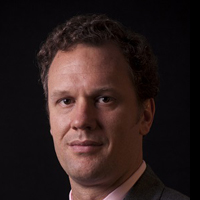
Dr Alex Bremner
Hailing from Daylesford, educated at Deakin University and reading for his PhD at the University of Cambridge (Gates Scholar 2001-04), Dr Alex Bremner joined the Faculty of Architecture at the University of Edinburgh in 2005.
His research specialty, history and theory of Victoria architecture, is interspersed with studies in architecture and empire, national identity and its relationship to the broader built environment, and religious architecture (particularly Anglican and Nonconformist cultures in Britain and its 19th c. colonies).
Author of Imperial Gothic: Religious Architecture and High Anglican Culture in the British Empire c.1840-70 (Yale University Press), which received the Alice Davis Hitchcock Medallion for 2013 from the Society of Architectural Historian of Great Britain, the William M. B. Berger Prize for British Art History (2014), the Historians of British Art Book Prize (2015), and was shortlisted for the Whitfield Prize, Royal Society (2014), Alex is also a recipient of the Hawksmoor Medal (Society of Architectural Historians of Great Britain) and the Founders’ Award (Society of Architectural Historians, USA) for outstanding scholarship in the field of architectural history
Currently, Alex currently serves as an editor for ABE Journal (Architecture Beyond Europe) and has serves as Editorial Advisory Committee member of the Journal of the Society of Architectural Historians (2015-2019)and a Deputy Editor of Architectural History, the journal of the Society of Architectural Historians of Great Britain (2012-2014). He is the recent recipient of a Leverhulme Major Research Fellowship (2019-2021) to complete a monograph study of Edwardian civic and state architecture.
2023
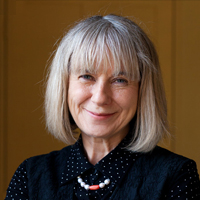
Dr Rosemary Hill
Dr Rosemary Hill is a writer, historian and independent scholar with an interest in biography, material culture and the connections between them.
She has written two prize-winning books: God’s Architect, a life of the Gothic Revival architect, A W N Pugin and Stonehenge, a history of one of Britain’s greatest and least understood monuments. Her last book, Unicorn: The Poetry of Angela Carter, was published in 2015. She is currently completing a study of antiquarianism in the Romantic period.
She is a fellow of the Royal Society of Literature and the Society of Antiquaries, a member of English Heritage's Blue Plaques Panel, a trustee of the Pugin Society and a Quondam fellow of All Souls College, Oxford.
The Miles Lewis Fellowship has been made possible by the generous support of the Vera Moore Foundation, in recognition of the esteemed career of Professor Miles Lewis AM.

Past events
-
Tuesday 6pm - 7:30pmLECTURE: Tomasz Tomaszek (Rzeszów) : Polish Wooden Vernacular Architecture
 Lecture
Lecture -
Thursday 10am - 5pmCONFERENCE: Save the Date 2024 Everyday Heritage and Difficult Legacies Symposium (Western Australia)
 Event
Event -
Thursday 6:30pm - 8pmBOOK LAUNCH: Amanda Achmadi launches Andra Matin at RBF
 Event
Event -
Wednesday 6pm - 7pmTALK: Katti Williams, Philip Goad and Peter Maddison - Alternate visions for Victoria's war memorial
 Event
Event -
Wednesday 5pm - 6pmBOOK LAUNCH: Architectural Encounters in Asia Pacific
 Event
Event -
Wednesday 9am - 5pmSYMPOSIUM: ACAHUCH presents Keeping House
 Event
Event -
Monday 6:30pm - 7:45pmLECTURE: Miles Lewis Oration 2024 - Khoo Salma Nasution (Penang, Malaysia)
 Event
Event -
Thursday 6pm - 7:30pmTALK: ACAHUCH Co-Director Julie Willis presents The Trouble with Hardy Wilson at U.Syd
 Event
Event -
Thursday 10am - 6pmINTERNATIONAL: Dr Stuart King speaks with Tania Sengupta at RIBA's "Decolonising Architecture Symposium: Reimagining Spaces and Histories"
 Event
Event -
EXHIBITION: John Andrews Architect of Uncommon Sense
 Event
Event -
Monday 6:30pm - 8pmLECTURE: Open House Melbourne Heritage Address: John Gollings
 Event
Event -
LECTURE: Modern Melbourne Premiere: Maggie Edmond
 Event
Event -
Sunday 11:40am - 4pmTALK: ACAHUCH members discuss alternative visions for Victoria's War Memorial
 Event
Event -
Friday 6:30pm - 8:30pmTALK and LAUNCH: Noritaka Minami on John Andrews
 Event
Event -
EXHIBITION: Lens + Form: Richard Tandler and Liz Woolf
 Event
Event -
Wednesday 5:30pm - 6:30pmLECTURE: Miles Lewis discusses Portable Buildings : Port Adelaide to Darwin at UniSA
 Event
Event -
CONFERENCE: RIBA presents Displaced Lives: Architects seeking refuge on the brink of the Second World War
 Event
Event -
Friday 1pm - 5pmBOOK LAUNCH: Domesticity Under SiegeEvent
-
EXHIBITION: South Space and Species of Suburban Spaces
 Event
Event -
Tuesday 6:30pm - 8:30pmTALK: Ernö Goldfinger - Famous But Forgotten (Isokon Gallery, London)
 Event
Event -
Wednesday 6pm - 7:30pmBOOK LAUNCH: The Architecture of Iwan Iwanoff by Warren Andersen
 Event
Event -
Monday
CfP : ICAM22 - Stories, Innovation, Strategy Event
Event -
Monday
CfP : RIBA Hybrid conference: Architects Seeking Refuge on the Brink of WWII Event
Event -
Thursday 6:30pm - 8pmTALK: Design Matters: Adapt at Robin Boyd Foundation
 Event
Event -
Wednesday 6:30pm - 8pmTALK: Paul Walker x DOCOMOMO on John Andrews Exhibition, U.Sydney
 Event
Event -
Tuesday 6:30pm - 8pmTania Sengupta (Bartlett, UCL) presents State Space and Lived Lives in the Colonial Margins, 19th C. Eastern India
 Lecture
Lecture -
EXHIBITION: When Robin Boyd went to Japan
 Event
Event -
Friday 5:15pm - 7pmFILMS: Murray Grigor on Mackintosh, Gwathmey Siegel and St Peter Seminary
 Films
Films -
Thursday 1:15pm - 2:45pmLECTURE: Sybille Frank on How to circumvent a complex history: International enterprises as heritage-makers at New Potsdamer Platz, Berlin
 Lecture
Lecture -
Sunday 1pm - 2pmTALK: Philip Goad: Japan through Boyd’s camera lens
 Event
Event -
Wednesday 10am - 11amTALK: Anoma Pieris on the Architecture of Confinement
 Event
Event -
LECTURE SERIES: Critical and Curatorial Practices in Design (SM2_23)
 Event
Event -
Friday 11am - 5:30pmSYMPOSIUM: ACAHUCH presents Prefab and Precut (1945-1975)
 Event
Event -
Wednesday 6:30pm - 8pmLECTURE: Miles Lewis Oration 2023 - Dr Rosemary Hill (U.Oxford)
 Event
Event -
Friday 12pm - 1:30pmPANEL : ACAHUCH + AIA 2023 Awards for ‘Heritage’ Discussion Panel
 Event
Event -
Tuesday 6:30pm - 8pmBOOK LAUNCH: Alberto Pugnale and Alberto Bologna launch book on Dante Bini at CO.AS.IT
 Event
Event -
Tuesday 5:15pm - 8pmBOOK LAUNCH: 'Campus' and 'An Unfinished Masterpiece'
 Event
Event -
Monday 11am - 12pmLECTURE: Prof Shao Yong (Tongji) on Living Heritage and Urban-Rural Revitalization in China
 Event
Event
